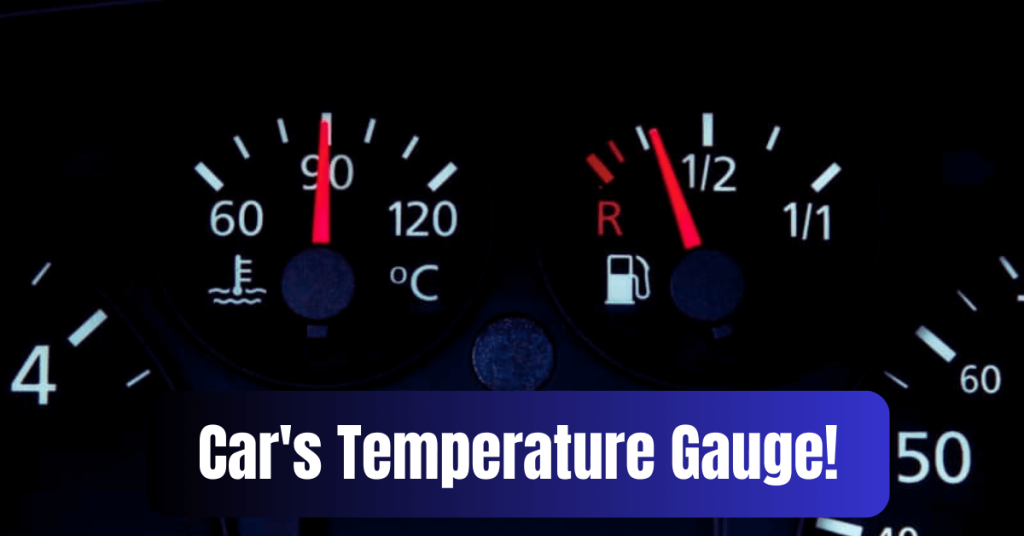
The temperature gauge on your car is an essential tool. It indicates the temperature of your car’s engine. It is essential to monitor the temperature gauge to ensure that your engine is operating at the optimal temperature. But you may wonder what should be my car temperature gauge.
Many car experts recommend keeping the engine temperature between 190 and 225 degrees Fahrenheit. Despite this, most cars lack an accurate temperature display and rely on a hot-cold scale with a needle in the middle. Therefore, it is crucial to monitor the gauge closely and take immediate action if the needle moves toward the hot end of the scale.
Keeping a close watch on your car’s temperature might help you avoid unnecessary and expensive damage. Continue reading to learn all the answers about your car’s temperature gauge.
Why do you need a car engine temperature gauge?
It is important to note that prolonged or frequent engine overheating can lead to significant expenses and potentially require engine replacement. Furthermore, overheating can cause warping or cracking of other essential vehicle parts.
To avoid these issues, keeping the engine temperature within the range of 190 to 225 degrees Fahrenheit is recommended. However, it is worth noting that many vehicles use a hot-cold scale with a needle in the middle instead of displaying the exact temperature.
What does your car’s engine temperature gauge mean?
It is not uncommon for the gauge needle in your vehicle to display slightly off-center. This variation can depend on various factors, including weather conditions, usage of the HVAC system, or transportation of heavy loads.
Nevertheless, it is worth noting that the needle generally remains within an acceptable range that accounts for these minor fluctuations and should not cause undue concern.
What Is a Normal Engine Temperature?
The normal operating temperature for most cars is around 195 to 220 degrees Fahrenheit. If the temperature gauge on your car is reading below this range, it could indicate that your car is running too cold. An inefficient thermostat, a blocked radiator, or a weak coolant level could cause this.
On the other hand, if the temperature gauge on your car is reading above this range, it could indicate that your vehicle is running too hot.
It is also essential to monitor the temperature gauge during hot weather or when driving in stop-and-go traffic, as these conditions can cause your car’s engine to heat up faster.
The temperature gauge will increase somewhat above the standard range in certain conditions. But if it reaches the red zone, you should pull over and turn off the engine to allow it to cool down.
Reasons why the temperature gauge reads high
There are several reasons why the temperature gauge on your car might be reading high:
Overheating engine
Your car’s temperature gauge may be a signal that the engine is overheating if it reads regularly above the range for correct functionality. A broken water pump, a jammed thermostat, or an inefficient radiator could all be responsible for this.
Low coolant level
Your car’s engine may overheat if the coolant level is low. Check the coolant level often, and top it out as desired.
Driving in hot weather or stop-and-go traffic
The heat from the sun and the constant stopping and starting can cause the engine to heat up faster, leading to a higher reading on the temperature gauge.
Watch Here:
Reasons why the temperature gauge reads low
If the temperature gauge on your car is consistently reading below the normal operating range, it could indicate that your car is running too cold. This could be caused by a variety of issues, including.
Malfunctioning thermostat
The thermostat helps regulate the engine’s temperature by controlling the coolant’s flow. Because of an unproductive thermostat, it can cause the engine to run too cold. If you want to buy a new thermostat, click here.
Low coolant level
The engine can run too cold when your car’s coolant level is weak. Often check the coolant level and top it off if needed.
Driving in cold weather
The lower ambient temperature can cause the engine to run harder than average, leading to a lower reading on the temperature gauge.
Loose or damaged radiator cap
The radiator cap helps maintain the proper pressure level in the radiator, which helps regulate the engine’s temperature. If the radiator cap is loose or damaged, it can cause the engine to run too cold.
Steps to take when the temperature gauge is high
If the temperature gauge on your vehicle is reading high, there are a few steps you should take to address the issue.
- Turn off the air conditioning and crank up the warmth. This will help to dissipate some of the heat from the engine.
- Locate a safe place to stop, then switch the engine off. Inflicting significant harm by letting an overheating engine keep running is not recommended.
- After that, check the coolant level. If it is low, refill it to the proper level.
- Check for any visible coolant leaks. If you find a leak, determine its source and address the issue.
- To check if the temperature gauge has reverted to normal, start the engine and let it idle for a while. If it does, low coolant levels were likely the cause of the high-temperature reading.
Watch here to fix this.
Steps to take when the temperature gauge is low
The temperature gauge may read too low if the engine’s cooling system or temperature gauge is broken. The following are some actions to take:
- Check coolant levels frequently and top them off as necessary.
- Look for any apparent damage or leaks in the radiator and its hoses.
- To ensure proper operation, test the thermostat.
- If the low-temperature reading persists, it may be a good idea to have the vehicle checked by a mechanic to identify any underlying issues.
How Do You Know What Should Be The Car Temperature Gauge For Your Car?
Knowing the average coolant temperature for your car is vital for ensuring that it is running at optimal performance and avoiding overheating. The temperature of the fluid that moves through the radiator and engine of your car to control the temperature is referred to as the coolant temperature.
The average coolant temperature for most vehicles is around 190 to 220 degrees Fahrenheit. However, this can depend on the make and model of your car.
Moreover, the average coolant temperature can vary. That often depends on the temperature outside and driving conditions. For example, on a hot summer day, the coolant temperature may be higher than usual due to the increased heat from the outside temperature. If you drive up a steep incline or tow a heavy load, the coolant temperature may be higher than expected. It can happen due to the extra strain on the engine.
When should you let your car warm up?
Particularly during the winter, most drivers believe their engines need to warm up for a few minutes. However, modern engines may only require less than a minute to reach the appropriate temperature. Warming up the engine for several minutes was necessary for older cars due to the risk of damage caused by the cold winter air. It affects the fuel-to-air ratio of the machine.
How Do You Check Your Car’s Temperature?
If you are concerned about the coolant temperature in your car, there are several ways to check it.
The first is to use the coolant temperature gauge on the dashboard, which should give you an idea of the current coolant temperature. You can also use a coolant temperature sensor, a device placed in the radiator or engine block that measures the coolant’s temperature. This can be a more accurate way to check the coolant temperature, as it measures the temperature directly rather than relying on a gauge.
Knowing What Should Be The Car Temperature Gauge For Your Car is essential for keeping it running smoothly and avoiding overheating. Regularly checking the coolant temperature and ensuring it is within the normal range can help extend your car’s life and avoid costly repairs.
Conclusion
The temperature gauge on your car should be kept in the normal operating range of 195 to 220 degrees Fahrenheit. If it reads consistently above or below this range, take note. Get it checked out by a mechanic as soon as possible to avoid more significant engine problems.
Keep Reading How To Reset ABS Light Without Scan Tool: Answered!
FAQs
What functions does a car thermometer have?
The coolant temperature in the engine is measured by a temperature gauge in the car, which displays the information on the dashboard.
The temperature gauge is in the red, but can I still operate my car?
Operating a vehicle with a red temperature gauge is dangerous for the engine. You should avoid it. It’s recommended to stop the engine and wait for it to cool.
How frequently should I check the level of the coolant in my car?
You should test the coolant level in your car at least once a month, also before your long trips. Maintaining the correct coolant level is essential. Because it prevents the engine from overheating.
Can I fill my coolant tank with water?
Using coolant in your car’s radiator is recommended to prevent overheating. In the absence of coolant, water can be used temporarily. Remember, coolant lasts longer before evaporating than water and should change soon.
What is the lifespan of car coolant?
If the temperature is not controlled, this degraded liquid could cause serious damage to your engine. Changing the coolant is advised after the first 210,000 km (140,000 miles) or 120 months, and then every 30,000 km (20,000 miles) or 24 months after that.
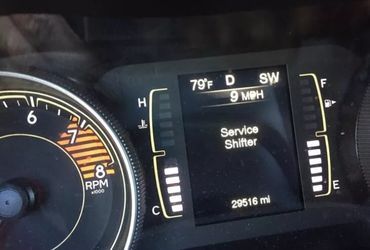
The service shifter light indicates that there may be a problem with your Cherokee’s service shifter and that professional maintenance or inspection is required.
When the Jeep Cherokee’s service shifter light is “ON,” maintenance is frequently overdue. A basic examination would also reveal the kind of maintenance the Jeep need. The underlying issue can be a bad fuse, a bad shifter bezel, or broken shifter wiring.
If you handle a Jeep Cherokee, you might have noticed the Service Shifter Light is On. Although this light has the potential to be scary, it typically means that your Jeep needs some service. The meaning of this light and a solution will be discussed in this essay.
How To Fix Service Shifter Jeep Cherokee We will discuss all the necessary information and details.
Causes of the Service Shifter Light Being On
1. Faulty Shifter Bezel
A shifter bezel is a part of a vehicle’s transmission system that surrounds the gear shift lever. It is typically made of plastic or metal and is used to secure the gear shift lever in place and protect it from damage. If the shifter bezel is faulty, it may cause problems with shifting gears, such as difficulty shifting into certain gears or the gears not engaging properly
2. The Shifter Itself
shifter, also known as the gear shift lever or gear stick. It is a component of a vehicle’s transmission system that is used to change gears. Near the driver’s seat, on the floor, or on the center console are the typical locations. If there is a problem with the shifter itself.
It may be due to a malfunction in the linkage or an issue with the shift mechanism. Some common symptoms of a faulty shifter include difficulty shifting gears, gears not engaging properly, or the shifter becoming stuck in one position.
3. A Faulty Fuse Box
A fuse box, also known as a fuse panel, is a part of a car’s electrical system that contains a series of fuses that protect the vehicle’s electrical components from damage caused by excess current. The fuse box is typically located under the hood or in the interior of the vehicle, and it may contain both high and low-voltage fuses. If the fuse box is faulty, it may cause problems with the electrical systems in your car, such as the lights, radio, or gauges not working properly.
4. Malfunctioning of Light
The malfunction of the light itself, rather than a problem with the car, has been reported to be the most frequent cause of the light turning on. The switch needs to be replaced if the light isn’t functioning properly because it could turn on or off suddenly.
5. Unplugging the Battery
The service shifter light won’t turn on if the battery is unplugged. The computer system of the car can be reset, and any dashboard warning lights can be turned off by removing the battery. When the battery is unplugged and the service shifter light turns off after it was on, the problem may not necessarily be fixed. If the transmission system issue continues, after reconnecting the battery, the light can turn back on.
6. Changing the Oil of the Jeep Cherokee
The replenishment of the oil is a crucial step in keeping the car on the right path. Because the engine parts are not properly lubricated, low engine oil can cause the car’s components to overheat.
Your Jeep Cherokee’s automatic transmission system can use the cooling area, however, doing so causes the service shifter light to come on. You can get your car back to running normally and replace the oil if you want the service shifter light to go off.
7. Replacing the Wiring of the Bad Shifter
A bad shifter’s wiring can lead to a number of issues for the car, including the service shifter light being in the “ON” position. Additionally, the performance and fuel efficiency of the car is negatively impacted by the service shifter’s poor wiring.
A few signs of problematic cable shifting in the car can be found. These signs are:
- incorrect gear light shifts
- incorrect gear shifts
- stuck on the service shift
- Problems with downshifting
- and struggling with the gear
- When shifting, there is no gear movement.
Bad shifter cables have been fixed at their respective locations. The vehicle’s sleeve moves as a result of the service shifter’s motion, allowing the control arm to be adjusted.
How do I fix the service shifter on my Jeep Cherokee? Home Repair in Service Shifter Light.
The service shift light is an indicator light that illuminates the dashboard of a vehicle when the transmission fluid needs to be checked or changed. Here are some steps you can follow to troubleshoot and repair the service shift light in your vehicle:
- Check the owner’s manual to see if the light has a specific meaning. Some vehicles have multiple shift lights, each of which may indicate a different problem.
- Check the transmission fluid level. Low transmission fluid can cause the service shift light to come on.
- Look for any leaks in the transmission fluid. The level will be low and the light will turn on if the transmission is leaking fluid.
Can the Jeep Cherokee be operated with the service shifter light on?
If the service indicator light comes on while the car is moving down the freeway, a common query is whether it is safe to keep going or if the driver should pull over and have the car towed to the nearest repair shop.
The response is rather straightforward. The service shifter light may appear as a result of a blown fuse, frayed wire, or a necessity for a software update on the car’s computer.
In this case, if the service gear shift light illuminates while driving, it is not an emergency and the car should not be pulled over. But it is advised that it be rectified as soon as feasible and finished on schedule.
What should you do if your service shifter light on?
If the service shifter light is on in your Jeep Cherokee, it means that there is an issue with the transmission or the gear shifter. Here are a few things you can try:
- If the transmission fluid is low, it can cause problems with the operation of the gear shifter. Check the transmission fluid level and add more if needed.
- The transmission cable connects the gear shifter to the transmission, and if it is loose or damaged, it can cause problems with the operation of the shifter.
- The shifter linkage is what connects the gear shifter to the transmission, and if it is damaged or not properly adjusted, it can cause problems with the operation of the shifter.
The Jeep Cherokee’s service shifter is it covered by the warranty?
If the issue with the service shift light is related to a problem with the transmission, it is possible that the repair may be covered under the Powertrain warranty or another warranty. Typically, the engine, transmission, and other drivetrain elements are covered by the powertrain warranty. Checking the details of your warranty to determine what is covered is always a smart idea.
Visiting the dealership for a diagnosis and repair estimate is a good first step in getting your vehicle fixed. They can also help you determine if any warranties apply and can give you an idea of the cost of the repairs.
Final Thought: How To Fix Service Shifter Jeep Cherokee?
It is important to address any problems indicated by the service shifter light as soon as possible to prevent further damage to the vehicle. If you have checked the transmission fluid level, transmission cable, and shifter linkage and are unable to identify the cause of the problem, it is recommended that a mechanic diagnose and resolve the problem. A mechanic will have the knowledge and tools to properly diagnose the problem and fix it.
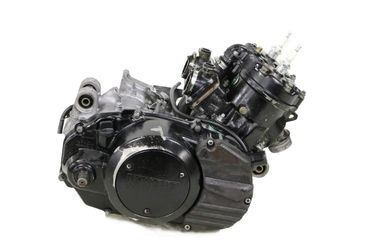
The Yamaha Banshee is a popular ATV (All-Terrain Vehicle) that Yamaha Motor Company produced from 1987 to 2006. It is known for its high-performance engine and agile handling, and you may find numerous Yamaha Banshee Complete Engine for sale in various stores.
The Yamaha Banshee 350 is a highly versatile and high-performing ATV that has proven its staying power in the market. Its impressive speed and features make it a top choice for racing, but the connection it forms with riders on so many levels genuinely sets it apart. Discover why the Yamaha Banshee 350 is the ultimate ATV ride.
The power plant concept of the four-wheeler was so innovative that it immediately established a new category and dominated it, leaving other manufacturers surprised and unable to produce a similar model to compete
If you are in the market looking for a Yamaha Banshee complete engine for sale, there are a few features and guides that you should consider.
What are the Specifications of Yamaha Banshee?
- Engine Displacement: 347cc
- Yamaha Banshee Weight: 386 lbs
- Engine Type: 2-Stroke Twin with Reed Valve
- Bore and Stroke: 64 x 54mm
- Engine Compression Ratio: 6.5:1
- Banshee Horsepower: 34 HP
- Cooling System: Liquid Cooled
- Carburator: Dual Mikuni 26mm
- Ignition: CDI
- Yamaha Banshee Seat Height: 31.5 Inches
- Starting System: Kick Starter
- Stock Yamaha Banshee Top Speed: 75 mph
Yamaha Banshee Dimensions
The Banshee 350 is relatively compact for an ATV. The Yamaha Banshee 350 has a length of 71.5 inches, a width of 43 inches, and a height of 44.5 inches. Its wheelbase of 50.5 inches gives it agile handling. The maximum loading capacity, including the rider, baggage, and accessories, is 220 lbs/100 kg. The dry weight is 385.8 lbs/175 kg and the curb weight is 412 lbs/187 kg. The Banshee 350 also has a dry weight of about 325 pounds, which is relatively lightweight for an ATV of its size.
Yamaha Banshee Complete Engine For Sale Features
There are two engine sizes for the Yamaha Banshee: 350cc and 400cc. The 350cc engine is more affordable than the 400cc engine and is appropriate for pleasure riding. For competitive racing, the 400cc engine is more powerful and especially suited.
It features a bore-stroke ratio of 64 x 54 mm (2.52 x 2.13 inches). A twin 26-mm VM26SS Mikuni carburetor with a 6.5:1 compression ratio powers the engine’s 347 cm3 (21.17 in3) displacement. Premix lube and wet-type air filtration are features of the Banshee YFZ350.
A standard Banshee’s advertised maximum torque is 54 Nm (39.83 ft-lb/5.51 kg-m), while its advertised maximum power output is 34 hp/34.47 PS (25.35 kW)
Guides:
- We recommend some guides when you use the engine.
Follow the manufacturer’s recommendations for break-in procedures. It is important to properly break in the engine to ensure its long-term performance and durability. - When lubricating your Yamaha engine. It is important to use the oil type recommended by the manufacturer. Using the wrong oil can lead to serious damage. Although different engines have different lubrication needs
- Check the oil level regularly and top off as needed. An engine that is low on oil can suffer serious damage.
By following these tips, you can help ensure that your Yamaha Banshee 350 ATV engine performs at its best and has a long service life.

Yamaha Banshee Fuel Consumption
The fuel tank can hold 3.2 US gallons (12 liters) of petrol plus a reserve of 0.7 gallons (2.5 liters). For optimized performance, use premium unleaded fuel.
using Klotz Supertechniplate (Provides the engine with the castor oil film strength and clean burn characteristics of Klotz synthetic lubricants. Only for high rpm racing.) – a balance of castor oil’s superior protective properties and the synthetic’s minimal carbon build-up properties, made up of 80% synthetic Klotz R50 oil and 20% Klotz BeNol.
Guides:
- Use high-quality fuel. Cheap or low-quality fuel can contain contaminants that can damage the engine and fuel system.
- Using fuel with an octane rating that is too low can cause knocking and pre-ignition, which can damage the engine.
- Try to avoid fuel that has been stored for a long time. Try to use new.
- Check the fuel filter regularly and replace it if it becomes clogged. Moreover, look for any damage or breaks in the fuel line. A damaged fuel line can leak fuel, which can be a fire hazard.
Yamaha Banshee Lubrication
An automated oil injection system that continuously lubricates the engine is included with the Yamaha Banshee 350 ATV. Oil capacity with routine oil changes is 1.6 US quarts/1.5 liters. For best effect, use Yamalube 2-R, Castrol R30, A545, or A747 motor oil, or an equivalent. Use SAE 10W30 or Yamalube 4 (10W30) as transmission oil with an API service classification of SJ or higher (SE to SG grades are already obsolete).
The risk of engine seizure and other problems brought on by insufficient lubrication is decreased thanks to this system, which makes sure that the right amount of oil is always provided to the engine.
Guides:
To properly lubricate the chain and sprockets of the Yamaha Banshee, follow these steps:
- To remove any dirt or debris, use a rag or brush to clean the chain and sprockets.
- Prior to wiping off any extra, give the lubricant a few minutes to penetrate.
- Make sure to evenly distribute the lubricant across the chain and sprockets.
- Check the tension of the chain and adjust it if necessary
Overall, the smooth operation of the Yamaha Banshee depends on regular lubrication. You can help ensure that your ATV runs at its optimal efficiency and has a long service life by adhering to the manufacturer’s instructions and routinely lubricating the engine, transmission, and other components.
Yamaha Banshee Tiers
Tubeless Dunlop KT851A AT21 7-10 front tires and KT877 AT20 10-9 rear tires are mounted to steel wheels. The ideal tire pressure is 30 kPa (0.30 kgf/cm2, 4.4 psi), which applies to both the front and rear tires.
When airing tires, do not exceed the range of 3.9 psi/27 kPa (0.27 kgf/cm2) to 4.7 psi/33 kPa (0.33 kgf/cm2). When setting the tire beads, the maximum pressure should be 36 psi/250 kPa (2.5 kgf/cm2). Change the rear tires with ITP GNCC Off-Road Bias Tires for a more comfortable, secure ride.
Guides
- Check the air pressure in your tires regularly.
- Regularly rotating your tires promotes even wear.
- Also, avoid exceeding the weight limit on your Yamaha Banshee to prevent damage.
- Excessive weight can cause your tires to wear out faster and may lead to tire failure.
- Be watchful of sharp things that could puncture your tires when riding off-road. Watch out for objects like pebbles, stumps, and other materials that could harm your tires.
Yamaha Banshee Breaks
The braking system of the Yamaha Banshee 350 is made up of a dual hydraulic disc brake operated by the right hand and a single hydraulic disc brake operated by the right foot. To satisfy any repair needs, you can use the WSays Complete 632 Pieces Stainless Steel Full Bolt Kit
Guides:
Try to follow this when using the brake for the safety and performance of your Yamaha Banshee;
- Regularly check the wear of your brake pads and replace them when necessary
- Inspect the brake rotors for wear or damage and replace them if needed.
- Perform regular brake bleeding to remove any air from the brake lines.
- Ensure that the brake hoses are not leaking and are in good condition.
- Damaged or leaking hoses can cause a loss of braking power.
Yamaha Banshee Drivetrain
A six-speed constant mesh transmission propels the YFZ350. It has a wet, multi-disc manual clutch system. Its primary helical gear has a reduction ratio of 2.869 (66/23), and the front and final rear reductions are 2.929 (41/14). It features a left-foot shifter.
What is the Price of Yamaha Banshee Complete Engine?
Complete engines for the Yamaha Banshee can vary in price depending on the engine size, condition, and location. Be sure to shop around and compare prices to get the best deal
Yamaha Banshee Engine Condition
When purchasing a Yamaha Banshee complete engine for sale, it is essential to check some things;
- The condition of the engine. Ask the seller about the engine’s history and whether it has been well-maintained. Look for any signs of wear or damage, and consider having a mechanic inspect the machine before making a purchase
- Look for any dents, scratches, or other visible damage to the frame, plastic body panels, and other exterior components.
- Check the condition of the tires. Make sure that they are properly inflated and not excessively worn.
- Inspect the condition of the suspension components, such as the shocks and swingarm. Make sure that they are not worn or damaged.
- Check the condition of the brakes and the brake lines. Make sure that they are functioning properly and are not leaking.
- Check the condition of the lighting and electrical systems. Make sure that all lights are functioning and that the wiring is in good condition.
- Look for any signs of rust or corrosion on the frame or other metal components.
- Overall, it’s important to thoroughly inspect the exterior of the Yamaha Banshee to ensure that it is in good condition and that there are no obvious signs of damage or wear.
What is the Top Speed & Acceleration of Yamaha Banshee?
Banshee 350 is powered by a liquid-cooled, 2-stroke, 347cc engine from Yamaha Motor Company. With a 6-speed manual transmission and a kick-start system, the engine is paired with a 6-speed manual transmission.
Yamaha Banshees can reach speeds up to 75 mph, making them one of the fastest ATVs on the market. In addition, the Banshee features dual exhausts, giving it a distinctive look and enhancing its smooth performance and power delivery.
Yamaha Banshee Suspension And Handling Characteristics
A double-wishbone suspension is used in the front, and a monoshock suspension is used in the rear. In addition to its short wheelbase and low center of gravity, it is also extremely agile and responsive.
Even at high speeds, the Banshee’’s chassis provides maximum stability and control.
In With its lightweight and responsive steering system, the Banshee is easy to steer based on riders’ input. Even in tight spaces, the handlebars provide excellent leverage and control, allowing for easy maneuvering.
Why choose the Yamaha Banshee Engine for Sale?
1. Best Quad for the Dunes
For sand dunes, the Yamaha Banshee is considered one of the best quads. Today, you still see a lot of Banshees being ridden in the dunes, so it’s not obvious that they’re no longer made. While holding on to the handlebars, the rider is able to fly right off the seat.
The sound and gut feeling of cracking the throttle on a twin-cylinder 2-stroke was unparalleled back in 1987, and arguably still to this day. Despite the introduction of more high-performance 4-stroke quads today, many duners still prefer the Banshee.
2. Easy Maintenance
In spite of the fact that the Yamaha Banshee is a 2-stroke sports quad, it does not require a lot of maintenance. Maintenance on this quad is actually pretty easy, and many say it’s much easier than maintaining the newer 4-stroke quads.
It is necessary to have basic mechanical skills to maintain a Banshee. In order for any sports ATV to last, it is imperative that its air filter be kept clean and sealed. These small engines can be damaged by dirt, dust, and sand. Do not be scared away by internet rumors. Maintaining one of the most popular ATVs of all time is just as simple as maintaining any other sports quad.
3. Easy Modification
Despite the fact that the Yamaha Banshee was originally built in 1987, the 2006 version was relatively similar to the original. After the Banshee was discontinued, Banshee owners replaced their ATV with aftermarket parts. As with most aftermarket parts suppliers, Banshee-loving parts suppliers continue to provide countless ways for you to keep your machines running strong, or much, much stronger than stock if that’s what you want.
What are the Yamaha Banshee Engine Problems?
In ’95 Banshee models, this problem is most common, but it can occur in any version or year. Bad coils, which are inherent to the Banshee, are one of the causes of this problem. Sometimes they run smoothly, and sometimes they don’t.
To In order to avoid this, you will need to replace your coils every year. The throttle cable and crank main seals tend to fail as well, resulting in low power at low RPMs, odd idles, and difficulty starting. As a result of rapid wear on the carb slide bores, stock carbs cause idling problems as well by sticking and not returning fully.
There are also mishaps that can occur with aftermarket carburetors. The top cable adjusters are one of the first things to inspect on these. You may have them too high up, preventing the slides from returning to their original position due to the cable. Turning the screws in, rotating to the right, then starting and setting your idle stop screws on the side should get your machine running again after loosening the jamb nut on the top caps.
To help narrow down the problem, you may need to perform a full inspection of your fuel, compression, and ignition systems (see section 8-48 of your owner’s manual for more information)
Conclusion: Yamaha Banshee complete engine for sale
When searching for a Yamaha Banshee complete engine for sale, be sure to consider the engine size, condition, price, and installation. You can find the perfect engine for your Yamaha Banshee with a little research and careful consideration.
Read More Places & Guides: Where Can I Ride My Quad Bike Legally?
FAQs
Can I race with the Yamaha Banshee Complete Engine?
The Yamaha Banshee Complete Engine is appropriate for use in racing. Before making any modifications to the engine, review the guidelines for your racing event.
What type of warranty is offered for the complete Yamaha Banshee engine?
Depending on the seller, the warranty for the complete Yamaha Banshee engine may be different. Before making a purchase, it is advised to review the warranty information.
What characteristics does the Yamaha Banshee Complete Engine have?
The liquid-cooled, two-stroke, twin-cylinder engine in the Yamaha Banshee Complete Engine has a 347cc displacement. It has a six-speed manual transmission and a maximum horsepower of 67.
How often should the entire Yamaha Banshee engine be maintained?
The Yamaha Banshee Complete Engine’s suggested maintenance schedule can change based on usage and riding circumstances. For specific maintenance instructions and intervals, it is advised to consult the owner’s manual.
Installing the Yamaha Banshee complete engine, is it challenging?
The installation of a Yamaha Banshee Complete Engine is a challenging task that requires mechanical expertise and specialized equipment.
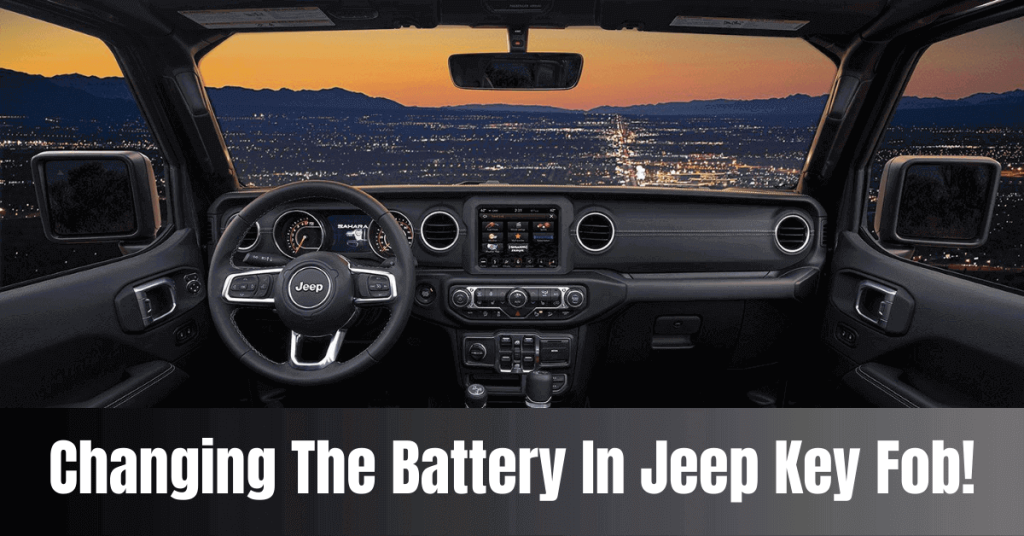
A part of your car’s keyless entry system seems to be the Jeep key fob. Modern Jeep models with key fobs remotely lock and unlock your Jeep doors, unlike older cars that require manual activity. So, the question is, how to change the battery in Jeep key fob?
To open your key fob, look for a small indentation or slot on the side or back. You can use a coin or small flathead screwdriver to pry it open, applying gentle pressure as you work around the fob to separate the two halves. Once you have it open, be sure to remove the old battery by carefully popping it out using a small tool like a screwdriver or fingernail. Before doing so, take note of the battery’s orientation.
Before changing the battery in your Jeep key fob, you should clearly know why your key isn’t working. Therefore, take immediate action if the Jeep key fob stops working and try to identify the specific issue. Continue reading for a better understanding!
Is The Jeep key not working: The most common issue!
It might be irritating when you must leave urgently, and your Jeep key isn’t working. Before exploring why the Jeep key might not work, let’s look at some potential symptoms. The following are the most common reasons for a Jeep key isn’t working;
- Key fob Battery
- Damaged Key
- Programming Issue
- Weak car battery
- Immobilizer
- Wrong key
- Brake Switch Issue
- Start Button
- Interference
Key fob Battery
Your key fob’s battery is either damaged or too weak. As a result, it cannot give the keyless entry system a powerful signal. You’ll need to buy new key battery packs and know how to change the battery in the Jeep key fob.
Damaged Key
One possible reason the Jeep key is not functioning is that it may have been damaged, such as from being dropped or exposed to water.
Programming Issue
There are a few ways programming issues could cause a Jeep key to malfunction.
- The key’s programming may be incorrect, which can cause it to be unable to communicate with Jeep’s computer system.
- The Jeep’s computer system may have a software issue or malfunction that causes it to be unable to recognize the key.
- The key and the Jeep’s computer system may not be compatible due to differences in software versions or hardware configurations.
- There may be a problem with the key fob battery, which can prevent the key from transmitting a signal to the jeep.
Weak car battery
Because of the battery’s partial discharge, the immobilizer module may not activate. If necessary, recharge the Jeep’s battery.
Immobilizer
Circuit board damage, water damage, or a software error are all sources of immobilizer system failure. An antenna or wiring problem may keep the keyless entry system from reading the signal from the key fob.
The Wrong Key
You are bearing the wrong key. See whether you didn’t grab the wrong set of keys.
Brake Switch Issue
Carefully press the brake pedal. The car might only start if the brake pedal is pressed down strongly enough or the brake pedal position switch is broken.
Start Button
The start button might not work correctly. It might not be making contact when you press it, for example.
Interference
The smart key can share a frequency with wireless devices such as after-market alarms and radar detectors, which can disrupt the key signals the Body Control Module gets (BCM).
Now you know the problem with your Jeep keys and when to change the battery. Here are a few steps on how to change the battery in your Jeep key fob;
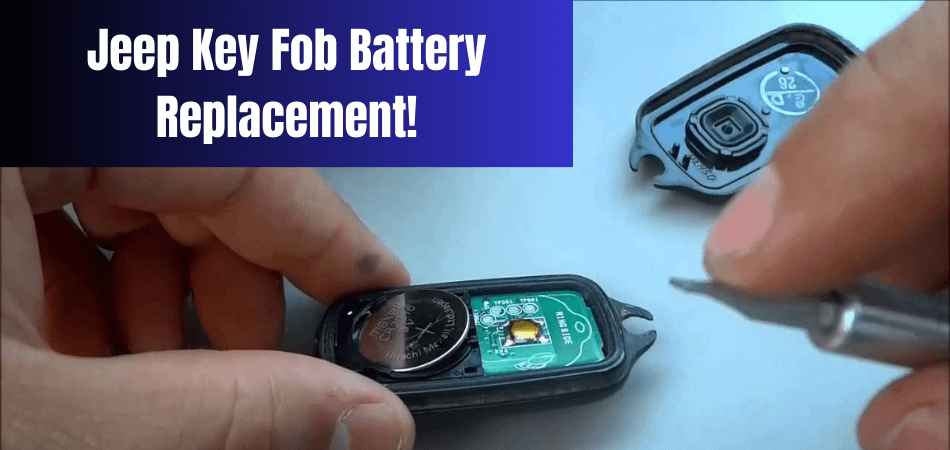
How to Change a Jeep Key Fob Battery
Watch Here:
Since the Jeep key fob is just two snap-together pieces of plastic, learning how to open one and change the battery is simple. A tiny circuit board, a rubber keypad, and a battery are all present once the case is unzipped.
Jeep key fob batteries usually last three to four years. However, the battery can run out much sooner, depending on how often it is used. It’s time for a battery replacement if your key fob is no longer functional within 45 feet of your car.
Here are the steps:
Pop the Jeep key fob open with a screwdriver.
To open your key fob and access the battery, you will need a flathead screwdriver because it is constructed of plastic that snaps together. This can be achieved by inserting the screwdriver tip into the key fob’s seam (the part near the key ring). Many Jeep owners recommend using a pry bar.
Select Jeep models, such as the Jeep Renegade, must remove the pull-out metal ignition key before opening the key fob. Once the metal ignition key has been removed, store it safely.
Apply pressure to the screwdriver as you pry it open.
You can use the screwdriver tip alone or with soft material to lessen the chance of breaking the plastic, depending on how delicately you can complete this step.
Set the screwdriver tip near the Jeep key fob’s seam. With just the right level of force, pry it open (never twist), ensuring not to harm the key fob’s plastic components. If not, you won’t be able to construct it.
Take the Jeep Key Fob Battery out of its housing.
There are 5 parts of the Jeep key fob. They are;
- a hole for the keypad and the key attached to it are set in the first part of the house.
- Keypad
- A circuit board
- A battery
- And the second half of the housing holds the battery in place
Before removing the old battery, note its location to help you replace it without confusion. Also, pay attention to the circuit board. Lastly, if using a screwdriver to pull out the old battery, be careful not to scratch or damage the metal electrical contacts.
Insert the replacement battery.
The key fob battery’s negative side is often on the bottom, while the positive side is on top. This may not be relevant for all key fobs. To position the new battery, use the mental image of the old battery’s polarity as a guide. This is why I earlier advised noting its polarity.
Thankfully, some Jeep keychains have instructions printed on the battery socket, indicating the proper way to install the battery.
Reassemble the key fob components.
After changing the battery, you carefully put the other parts of the key fob back together. Insert the circuit board into the keypad first, then the keypad into the housing where it fits.
Once you’ve completed these steps, completing the following when reassembling is simple. Put half the rechargeable batteries on the circuit board and the numeric keyboard’s half.
Snap the key fob housings together.
Two parts of your key fob are now assembled. Carefully but firmly snap them together; start near the key ring and work your way to the other end of the casings. Ensure that the edges of the key fob housings are even with each other. Otherwise, the replacement key fob will not fit properly.
Conclusion
Finally, it doesn’t take much to replace the battery in your Jeep key fob; it’s simple maintenance you can do independently. If you stick to the directions, your key fob will quickly restore its power.
Moreover, ensure you have the new battery and the little flathead screwdriver needed to change the battery. Find a battery that suits your key fob properly. The manager must ensure that the key fob is always attentive and alert.
FAQs
What kind of battery is suitable for a key fob?
The most commonly used key fob is the CR2032. Further button cells are CR2450, CR2025, CR1616, and CR2016.
What is the lifespan of a key fob battery?
On average, the battery in a Jeep key fob will last between 3 to 4 years.
What is the cost of replacing a key fob battery?
The batteries cost $10 or less. Some fobs require two batteries for the key.
Exactly how similar are Jeep batteries?
No. Car batteries come in a variety of types to suit the specific needs of different vehicles.
How do I start my Jeep when the key fob is dead?
Insert the mechanical key into the designated slot, press the brake pedal, and press the start button while keeping the key in the slot.
RELATED:
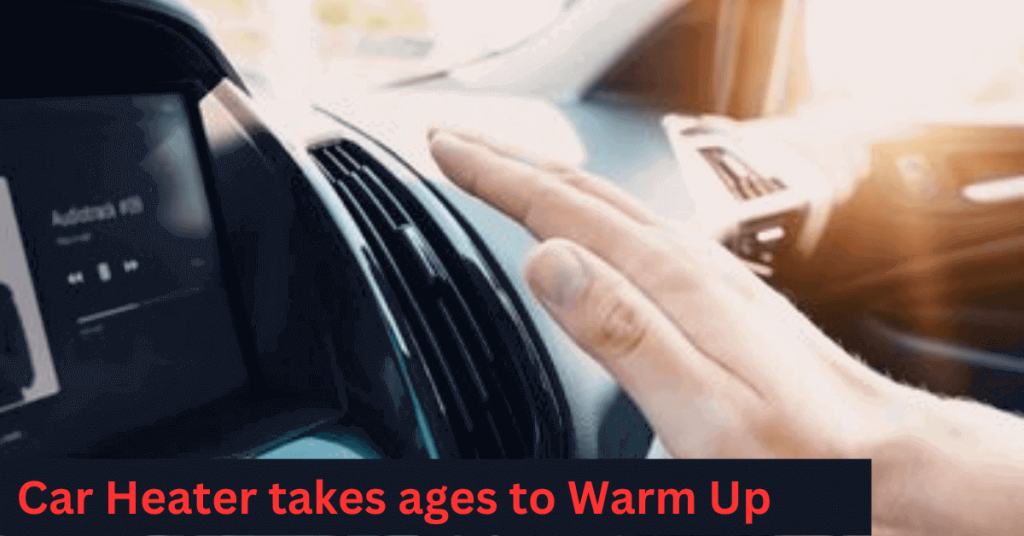
Car problems can be confusing and cause people to think hard. Cold weather can put a strain on many of your vehicle’s components. Especially modern while vehicle riders think, why does my car heater take ages to warm up? They also think why is my car heater blowing cold air?
The car heater typically works together with the coolant, thermostat, radiator, and water pump in the car’s cooling system. A car heater relies on the engine’s cooling system components.
In order to efficiently dissipate heat and prevent the engine from overheating, while you are trying to stay warm.
However, if you’ve often noticed that in your car heater takes ages to warm up. It could result in wasting more gas. Also, emissions when driving your car.
If one or more of these problems exist, your car can vent chilly air instead of heated air. The following issues are the reason why your car heater takes ages to warm up;
1. Low coolant levels in the radiator
2. Clogged or broken heating controls
3. Dysfunctional thermostat
4. Faulty heater valve
5. Problems with Heater Core
6. Coolant System Leaks
7. Problem with Water Pump
8. Uncontrolled HVAC
9. Stagnant Antifreeze through the Heater Component
Now take a look at each of these issues in more in-depth…
Low coolant levels in the radiator
Coolant, also known as radiator fluid, plays a crucial role in your car heater. Low coolant levels is the main reason why your car heater takes ages to warm up indeed.
However, it’s essential to maintain the radiator fluid in your vehicle not only in the summer but also in the winter. Because the coolant helps to regulate the temperature of your vehicle’s engine. Also plays a role in heating the interior of your car.
Moreover, the appropriate level for the coolant is indicated by the F and L marks on the side of the coolant reservoir. The coolant level should be within this range indeed.
However, it’s recommended to have the coolant serviced in the fall or spring if it is time for a refill or maintenance.
Clogged or broken heating controls
In a car’s heating system, the controls are responsible for regulating hot air flow into the cabin. A clogged or broken heating controls in car heater is another main cause why the car heater takes ages to warm up?
If the controls are clogged in your car heater, then it means that there is some sort of obstruction or blockage. While that is preventing the controls from functioning properly.
This could be caused by dirt, debris, or other foreign substances that also have accumulated in the control mechanism.
When your car’s heating controls are clogged, you can try to clean them. Use a cloth or a small brush in order to gently remove any dirt or debris that may be blocking the airflow.
If the controls are broken, you will also likely need to have them repaired or replaced by a mechanic.
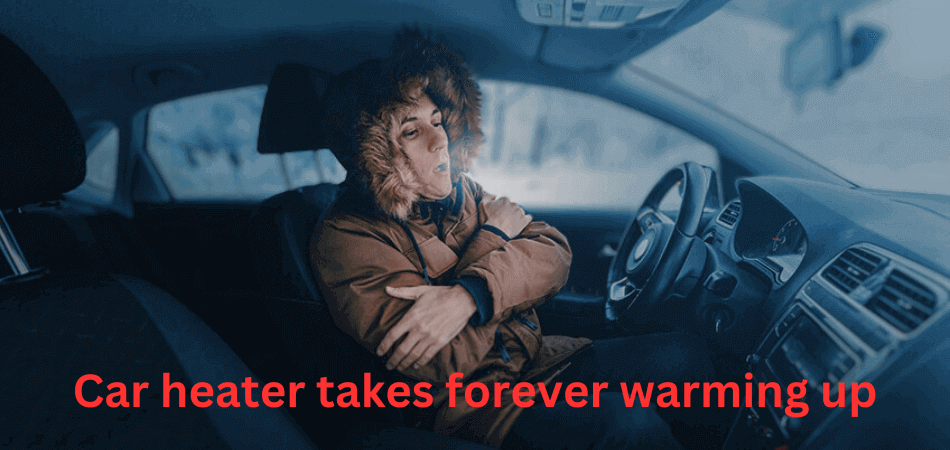
Dysfunctional thermostat
Your car’s thermostat works with your car’s radiator and coolant. A thermostat also helps regulate the temperature inside a vehicle by controlling the coolant flow through the radiator and heater core.
If there is a problem with the thermostat, such as it being stuck open, it can cause the car to take longer to warm up and the temperature gauge may not rise immediately after starting the vehicle. However, this can be an indication of an issue with the thermostat.
While it is essential to address any issues with a stuck open thermostat in your car promptly. Neglecting to do so could result in the engine overheating and potentially causing significant damage that may be costly to repair.
It is recommended to have the thermostat repaired or replaced as soon as possible to avoid any potential issues.
In order to fix a stuck open thermostat, the heater core is fueled with enough coolant. To generate the heat that keeps your car warm otherwise you need to access the thermostat and replace it with a new one. However, without a mechanic, you can fix a broken thermostat.
How To Fix a Broken Thermostat
- First, allow the car to cool for a period of 15 to 20 minutes before proceeding
- Locate the thermostat. The thermostat can be found at the bottom of the radiator, situated between the core and the main hose
- Then, gently remove the radiator cap.
- To drain the coolant, position a bucket below the radiator and remove the hose.
- Then, remove and replace the thermostat
- Now, attach the hose to the radiator.
- Place the reservoir cap back on after adding the coolant.
- Start the engine after lowering the car.
- See if the heat comes around while you wait.
- Check the coolant level after a test drive to be sure it hasn’t fallen.
Below there is also a practical show in how to replace a broken thermostat;
Faulty heater valve
The temperature of the air blowing inside your car’s cabin is maintained by the heater valve. Also, the temperature of air blowing within the place of your automobile is managed by the car heater valve.
According to the heater temperature that you specify, this valve regulates the flow of coolant inside the heater core indeed. If this valve becomes stuck or malfunctions, then it will take ages to warm up. The heater core won’t be able to respond to your needs until you fix or replace it.
Problems with Heater Core
The heater core is another potential source for your car heater’s problem. Although the coolant level in your car may be enough, the heater core could be blocked.
Also, the coolant entering the heater core needs a suitable route to be followed. The heater in your vehicle won’t operate at all while the heater core is clogged. However, it will make burning smell from car heater.
Moreover, the heater core of your car is mainly responsible for smoothing the movement of the coolant liquid along with your car reheat and heating systems. Further, there are other indicators of a faulty heater core too.
If your engine overheats despite a normal coolant level, or if your coolant runs out quickly, the heater core is responsible. Frequent fogging inside the cabin is also a sign of a faulty heater core.
Coolant/Cooling System Leaks in car heater
Naturally, leaks are included on this list, given that to effectively operate your vehicle’s cooling system, a 50:50 mixture of antifreeze and water is necessary. This ratio is difficult to change unless the cooling system’s components are disabled or the coolant composition is damaged. Leaks, however, are certain to be among the first things to show when it becomes troubled.
Despite what most owners believe, this condition can be challenging because leaks can occur anywhere, making them unpredictable and difficult to detect. However, you can identify the leak’s source by checking the damage to your car’s radiator, water pump, and connections, among other things.
Problem with the Water Pump
Extremely high engine temperature readings, which are a sign of water pump problems, are similar to those of a blocked radiator.
Moreover, this indicator could probably show or be linked to ongoing engine overheating. The pump can no longer move coolant or hot water throughout the heater core and engine block when this happens.
However, the heater will not work if the heater core takes too long to warm up. In the worst instance, ignoring a malfunctioning water pump could result in more engine damage indeed.
Uncontrolled HVAC can make the car heater takes forever to warm up
HVAC (Heating, Ventilation, and Air Conditioning) equipment needs a monitoring system. In order to control the operation of a heating and/or air conditioning system in a car.
Moreover, Briefly stated, the heating system may not be activated by the buttons, knobs, or haptic feedback touchscreens in your car. Your heater may stop operating as a result of problems caused by shorts, damaged dials, or defective touch screens.
Stagnant Antifreeze through the Heater Component
If the coolant in your vehicle is not moving, further it can cause the car heater to not get hot enough. However, this is similar to the problems that a defective thermostat can cause.
The balance needed for the temperature control system to operate normally is disturbed when the antifreeze is not flowing through the heater component. Moreover, it is rare for the engine coolant to freeze on its own. If the antifreeze becomes stagnant, it is often due to issues with the heater control valve or water pump, which are responsible for circulating the fluid through the cooling system.
Conclusions: why the car heater takes ages to warm up.
Everyone can find it annoying when their car takes a while to warm up in the morning, especially in the winter when you have to go immediately. However, In cold weather, engines require extra time to warm up. However, you know how to examine and fix your car heating problems.
If you notice that it takes much longer than it should for the engine to warm up then you should bring a licensed mechanic to work on your car heater; otherwise, the engine will suffer damage and cost a lot of money.
FAQ’s
What should I do about my car heater, which blows hot air but not enough of it?
A blocked cabin air filter or a broken blower motor may cause if your car heater is blowing hot air but not very strongly.
Can a low coolant level make the car heater inoperable?
Yes, Because coolant is necessary for transferring heat from the engine to the heater core, low coolant levels might result in the heater not working.
How often should I change the cabin air filter in my car?
The manufacturer’s recommendations should be followed every 12,000 to 15,000 miles when replacing the cabin air filter.
Do problems with automobile AC and heaters overlap?
Due to the distinct systems and components that car heaters and air conditioners (AC) use, they can not experience the same issues. However, low coolant levels, a broken thermostat, or a clogged heater core are some typical problems that both systems may encounter, cabin air filter clogs up some common issues that can affect both systems.
What is the secret to keeping a car heater properly functioning?
Monitor and maintain your car’s thermostat, cooling system, heater core, and coolant level in time.
RELATED:
Signs Of A Bad Car Battery Vs Alternator: Explained!
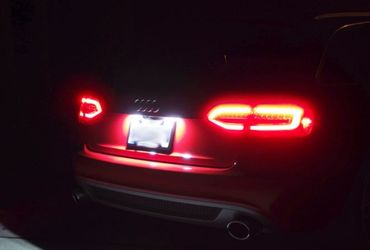
The key function of a car alarm is to prevent robbers from robbing your vehicle. But if you discover that your car alarm goes off without warning. It can be more embarrassing than comforting for the car owner.
Having issues with your car’s alarm system will disrupt your sleep, anger your neighbors, and lead to legal action. Additionally, it may prevent you from being able to sense if an actual intrusion is occurring.
In many cases, resetting the alarm or the car’s ECU (engine control unit) can fix the problem.
There are several potential causes for a car alarm to keep going off, such as defective sensors, a low battery, wiring issues, a damaged key fob, or jagged doors.
It is important to address the issue as soon as possible to avoid further inconvenience.
Read further to learn about the issues. Why do the car alarms keep going off randomly?
If you want to permanently stop your car alarm from going off, it’s essential to understand what is causing the issue. Here are some common reasons why a car alarm keeps going off randomly:
Defective Hood Latch Sensor
A defective hood latch sensor can cause a car alarm to go off for no reason. The hood latch sensor is responsible for detecting when the hood of the car is open and triggering the alarm. If the sensor is defective or not functioning properly, it may trigger the alarm without any apparent cause.
To fix this issue, you may need to replace the hood latch sensor or check the wiring to make sure everything is connected properly. It is also important to keep the sensor clean and free of dirt, debris, and engine grease, as this can cause it to malfunction and trigger a false alarm.
Poor Hood Latch Connection
A poor hood latch connection can cause a car alarm to go off randomly. It’s responsible for securing the hood in place and preventing it from opening unexpectedly. If the latch is not properly connected or damaged, it may trigger the alarm.
To fix this issue, you will need to check the hood latch connection and make sure it’s in place. Otherwise, you may need to replace it.
It is also important to keep the latch clean and free of dirt, debris, and rust, as these can cause it to malfunction and trigger a false alarm.
Faulty Door Lock Sensor
A malfunctioning door sensor is another reason which can cause a car alarm to keep going off randomly. The door sensors detect when someone opens the door or closes it and trigger the alarm if necessary. If the door sensors are faulty or not functioning properly, they may trigger the alarm without any apparent cause.
To fix this issue, you may need to replace the door sensors or check the wiring to make sure everything is well-connected. It is also important to make sure that all the doors are closed and locked to prevent the alarm from going off.
Low Battery Level
It is important to take care of a low battery level as soon as possible to prevent further issues with your car and its alarm system. A dead battery can also cause problems with starting the car, and it may be difficult to jumpstart if the battery is too dead.
To fix a low battery level, you can try jumpstarting the car using another vehicle or a portable jump starter. If this does not work, you may need to replace the battery. It is a good idea to keep a spare battery on hand in case of emergencies.
Corroded or Rusted Battery Terminals
Corroded or rusted battery terminals can cause problems with your vehicle’s electrical system. & resulting in your car alarm keeps going off. It can build up on the terminals, making it difficult for the current to flow.
To fix the problem, you’ll need to clean the terminals. If you don’t know how to do so, follow the mentioned ways below:
- Remove the battery from the vehicle. Wear eye protection, as battery acid can be corrosive.
- Clean the terminals with a wire brush or sandpaper. You can also use a mixture of baking soda and water to help neutralize any acid on the terminals.
- Reassemble the battery and test to make sure the electrical system is working.
- If the problem persists, you may need to replace the battery.
Weak or Too Sensitive Sensor Connection
A weak or sensitive sensor connection can cause problems with your vehicle’s electrical system. Sensors are responsible for providing data to the vehicle’s computer, which helps to control various systems such as the engine, transmission, and fuel injection. If a sensor is not functioning well, it can cause problems with the way the vehicle runs and hamper your car alarm system.
To diagnose a weak or too-sensitive sensor connection, you’ll need to use a diagnostic tool to retrieve any fault codes stored in the vehicle’s computer. This will allow you to identify which sensor may be causing the problem.
Disconnected Circuitry or Wiring Problems
Disconnected circuitry or wiring problems can cause problems with your vehicle’s electrical system. These issues can happen for a variety of things, such as damaged wiring, loose connections, or corrosion.
To diagnose and fix disconnected circuitry or wiring problems, you’ll need to use a diagnostic tool to retrieve any fault codes stored in the vehicle’s computer. This will allow you to identify the problematic system.
Incorrect Alarm System Installation
It’s important to make sure that your car’s alarm system is well installed, as an incorrect installation system can cause problems with your vehicle’s electrical system. And may not provide the security as promised.
It can cause problems such as the alarm going off unexpectedly or not functioning. If you suspect that your car’s alarm system was not well installed, it’s important to have it inspected by a professional mechanic.
The mechanic will be able to diagnose the issue and determine if the problem is due to poor installation. If that is the case, they will be able to correct any issues and install the alarm system in a proper way.
How Long Does a Car Alarm Go Off in the UK?
There is no specific time limit for how long a car alarm can go off in the UK. The length of time that a car alarm goes off will depend on a variety of factors, including the type of alarm system, the ambient temperature, and the condition of the battery.
In general, a car alarm can go off for several hours before the battery will be drained, but the battery can die faster if the alarm is triggered often or if the battery is not in good condition.
If you are concerned about your car alarm going off for an extended period of time, there are a few steps you can take to prevent this from happening. First, make sure that the battery is in good condition and charged. You can also consider installing a battery backup system, which can help keep the alarm going in the event of a power outage.
How Long Do Alarm Systems Go Off For?
Alarm systems can be set to go off for different lengths of time, depending on how they are programmed. Some alarm systems will go off for a set amount of time, such as 15 minutes or 30 minutes, before automatically shutting off.
Others will continue to sound the alarm until they are manually turned off by someone with the correct code or key. It is important to note that some jurisdictions have laws governing how long an alarm can sound before it needs to be shut off. So it is important to be familiar with any relevant laws in your area.
Will a car alarm go off if the car is unlocked?
It is possible for a car alarm to go off if the car is unlocked, depending on how the alarm system is set up. Some car alarm systems can detect when someone opens the doors or starts the car without the proper key or remote control and will trigger the alarm in these cases.
However, other car alarm systems may not be set up to trigger when the car is unlocked. These types of systems may only be activated by sensors that detect movement or vibration, such as a shock sensor or a glass break sensor.
Conclusion
If your car alarm is going off randomly or for long periods of time, it could be draining the battery faster than normal. This could be due to a problem with the alarm system itself, such as a malfunction or defect. Or it could be caused by a faulty sensor or another issue.
If you suspect that there is a problem with the alarm system, it may be a good idea to have it checked by a professional mechanic or car alarm specialist to diagnose and resolve the issue.
RELATED:
Burning Smell From Car But Not Overheating: Causes & Solutions!
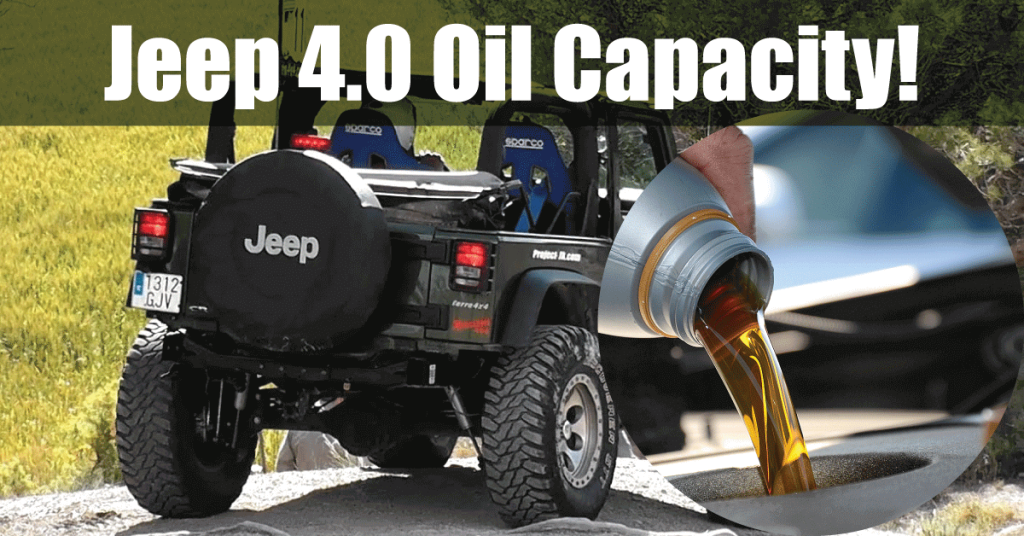
Jeep is a highly reputable brand known for producing high-quality SUVs that offer a great driving experience and a rugged appearance. & we know that the core of every Jeep engine depends on oil to operate at its best. But do we know the Jeep Wrangler 4.0 oil capacity & type?
It is generally a good idea to use a high-quality oil that meets the standards of the American Petroleum Institute (API). Using oil with a viscosity of 5W-30 or 10W-30 is the best choice for Jeep 4.0 engines. These oils are suitable to use in the wide range of temperatures that are encountered by a Jeep 4.0 engine.
However, the oil efficiency of Jeep vehicles has been a point of contention for some. To ensure that you are using the correct amount of oil for your Jeep and to avoid overfilling, it is important to know the Jeep 4.0 engine oil capacity.
This will help you maintain the health of your engine and potentially extend its lifespan.
So, explore this article to know how to find out Jeep 4.0 engine oil capacity.
Jeep Wrangler 4.0 Engine Oil Capacity: Ways To Find Out!
Most Jeep SUVs with a 4.0 engine will require 6 quarts of oil, which is equivalent to about 1.5 gallons in the US or 5.7 liters. However, some repair manuals recommend using 5 quarts of oil and stating that the oil capacity is 5 quarts.
- To ensure you have the correct amount of oil in your engine, it’s best to fill the oil up to the top level of the oil dipstick after replacing the oil filter and engine oil.
- The total amount should be 5.5 quarts of oil, although the exact amount may vary depending on factors such as the oil filter.
- Keep in mind that a dry engine may require a full 6 quarts of oil, such as after a rebuild, and some oils may remain in the engine even when changing the oil.
- It’s important to reset the oil light or any other service reminder warning lights on your Jeep after completing an oil change.
What Type Of Oil Should You Use In Your 4.0 Engine?
Keeping your Jeep in good shape is crucial to its longevity. Choosing the correct motor oil is an important decision that can help ensure the health of your vehicle.
A six-cylinder engine is well known for its longevity, with the ability to go up to 200k miles without major repairs. When selecting a motor oil for your 4.0 engine, it’s important to refer to the owner’s manual for the specific oil viscosity and type recommended for the vehicle.
When you use the wrong type of oil for your engine, you can damage the engine or reduce its performance. Ensure using high-quality oil that meets the requirements of the vehicle.
Let’s explore the best type of oil to use in your 4.0 Jeep engine.
It is generally a good idea to use a high-quality oil that meets the standards of the American Petroleum Institute (API). Using oil with a viscosity of 5W-30 or 10W-30 is the best choice for Jeep 4.0 engines. These oils are suitable to use in the wide range of temperatures that are encountered by a Jeep 4.0 engine.
Synthetic oil can be a good choice to use in a Jeep 4.0 engine. Synthetic oil comes from artificial base stocks, rather than from crude oil. It provides excellent protection for the engine under normal driving conditions and also helps to improve fuel efficiency.
Including having a higher viscosity index, resulting in less prone to thinning out at high temperatures and thickening up at low temperatures.
Watch Here for a better understanding
Advantages Of Using Synthetic Oil For Jeep 4.0 Engine!
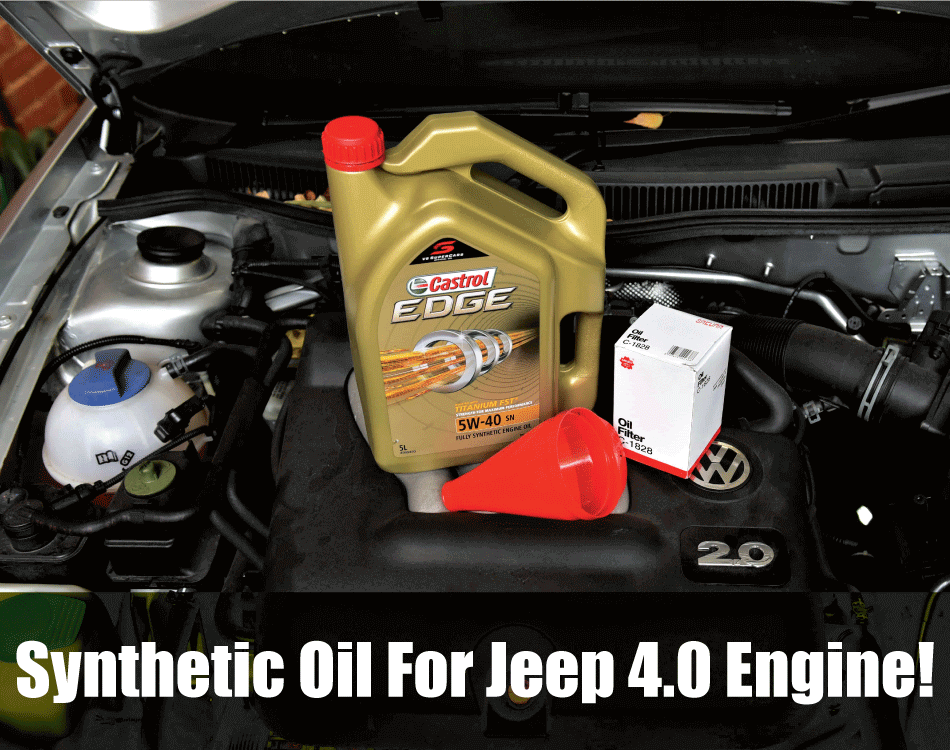
There are some potential advantages to using synthetic oil in a Jeep 4.0 engine:
Improved performance
Synthetic oil is designed to provide better protection against wear and heat. Which can be beneficial in a high-performance engine like the one found in a Jeep 4.0. Synthetic oil may also offer better protection against engine deposits to help maintain optimal engine performance.
Longer service life
Synthetic oil has a longer service life than regular oil, which means it can go longer between oil changes. This can save you money and time in the long run, especially if you drive your Jeep frequently or in harsh conditions.
Better performance in extreme temperatures
Synthetic oil has a higher viscosity index than regular oil. Which means it is less prone to thickening or thinning in response to temperature changes. This can make it a better choice for use in extreme temperatures, such as hot or cold weather.
Overall, synthetic oil is generally considered to be a higher-quality option than regular oil, but it is also more expensive. Whether synthetic oil is worth the extra cost will depend on your specific driving needs and the conditions in which you use your Jeep 4.0 engine.
Jeep 4.0 Oil Capacity: How Much Does It Take?
The amount of oil that a Jeep 4.0 engine takes can vary depending on the specific model of the Jeep and the type of oil being used. A Jeep 4.0 engine typically requires between 5.5 and 6.5 quarts of oil. The particular amount may vary based on factors such as the type of oil filter being used.
In general, 5.5 quarts is a good starting point for most Jeeps, but it may be necessary to use slightly more or less depending on the specific needs of the engine.
To ensure proper lubrication and protection, it is important to use the correct amount of oil for the engine. The recommended viscosity for motor oil in a Jeep 4.0 engine is typically 5W-30.
| Model | Year | Oil Capacity | Viscosity | Torque |
| Jeep Cherokee XJ 4.0L | 1987-1990 | 5.5 quarts (filer included) | 10W – 30, 10W – 40, 20W – 40, 20W to 50 | 30 ft/lbs. |
| Jeep Cherokee XJ 4.0L | 1991-1999 | 6 quarts (filter included) | 10W – 30 5W – 30 | 30 ft/lbs. |
| Jeep Cherokee XJ 4.0L | 2000-2001 | 6 quarts (filter included) | 10W – 30 5W – 30 | 25 ft/lbs. |
| Jeep Grand Cherokee ZJ 4.0L | 93-98 | 6 quarts (filter included) | 10W – 30 5W – 30 | 30 ft/lbs. |
| Jeep Grand Cherokee WJ 4.0L | 99-04 | 6 quarts (filter included) | 10W – 30 5W – 30 | 25 ft/lbs. |
| Jeep Wrangler YJ | 1991-1995 | 6 quarts (filter included) | 10W – 30 5W – 30 | 30 ft/lbs. |
| Jeep Wrangler TJ/LJ | 1996-1999 | 6 quarts (filter included) | 10W – 30 5W – 30 | 25 ft/lbs. |
| Jeep Wrangler TJ/LJ | 2000-2006 | 6 quarts (filter included) | 10W – 30 5W – 30 | 25 ft/lbs. |
How Important Is It To Maintain the Oil Capacity Of Jeep 4.0 Engine?
Oil maintenance is important for a Jeep 4.0 engine because oil plays a critical role in the proper functioning and longevity of the engine. Oil plays a significant role in lubricating the moving parts of the engine. It also reduces friction and wears on the engine parts.
Additionally, it distributes heat away from the moving parts of the engine, which helps to cool it. Moreover, oil traps dirt and debris to help keep the engine clean.
Lack of proper Jeep 4.0 engine oil maintenance can lead to the following problems:
Increased engine wear: If there is not enough lubrication, the various components of the engine may rub against each other, resulting in excessive wear and possibly even engine damage.
Overheating: If the oil becomes dirty or breaks down, it may not be able to effectively cool the engine, which can lead to overheating and engine damage.
Poor fuel efficiency: Dirty or low oil levels can cause the engine to work harder, which can lead to reduced fuel efficiency.
To keep your Jeep 4.0 engine running smoothly and prevent damage, it is essential to stick to a regular schedule for changing the oil. This typically involves changing the oil and oil filter at regular intervals, as well as checking the oil level and condition regularly.
By maintaining your Jeep Wrangler 4.0 oil capacity, you can help to extend the life of your engine and ensure that it runs smoothly and efficiently.
How Often Should You Change Your Jeep 4.0 Engine Oil?
It is generally recommended to change the oil in a Jeep 4.0 engine every 3,000 to 5,000 miles or every six months for optimal performance.
However, you should check the oil level and condition at least once a month. If you notice the following things:
- The oil has changed colors from light brown/amber to black.
- The oil feels coarse.
- The engine is making strange noises.
- Or you can smell oil, smoke, or something burning when the engine is running.
It may be time to change the oil. Adhering to a regular oil change schedule can help extend the life of your engine and keep it running smoothly and efficiently.
Watch here
Final Thought: Jeep Wrangler 4.0 Oil Capacity!
Finally, Jeeps are widespread vehicles for off-road happenings and family trips. They are comfortable and reliable and can handle rough terrain with ease.
However, it is important to make sure that you have enough oil for your Jeep 4.0 engine to ensure that you don’t get stranded on your trip. That’s why it is essential to know the oil capacity of your Jeep 4.0 engine.
By keeping your engine properly lubricated and maintaining the oil level, you can help to ensure that your Jeep is ready for your next adventure. Keep your eyes on the road and drive safely!
FAQs
Which is better, 5W-30 or 10W-30 oil?
For personal automobiles and light-duty petrol and diesel engines, 5W-30 multi-grade oil is recommended. Like 10W-30 oil, it also offers a better cold start. On the other side, business vehicles and cars with heavy-load engines benefit more from the slightly heavier oil, 10W-30.
Should I use 5W40 or 5W30?
Purchase oil with a viscosity of 5W-40 if you frequently sit in traffic, travel at high speeds, and operate your automobile in urban settings. However, if you favor peaceful driving and value fuel efficiency and environmental responsibility, pick a product with a 5W30 designation.
Is 5W-30 suitable for long distances?
Pennzoil SAE 5W-30 High Mileage Motor Oil is specifically designed for vehicles with more than 75,000 miles on them, especially those with oil leaks and oil burn-off. Higher mileage engines typically wear out faster than brand-new engines.
What shade should 5W-30 oil have?
Tan or caramel in colour. Caramel, amber, or tan should be the colour of your car’s oil when it is inserted into the engine. If it continues to be that way, your car is in good condition, the oil is clear and debris-free, and it can carry out its intended function.
Can 5W-30 be used in your Jeep Wrangler instead of 5W-20?
In general, it is not advised to substitute 5W-30 oil (or any other oil weight) for 5W-20 oil because even a small viscosity change has the potential to harm your engine.
RELATED:
What Type Of Oil Does A Jeep Wrangler Take
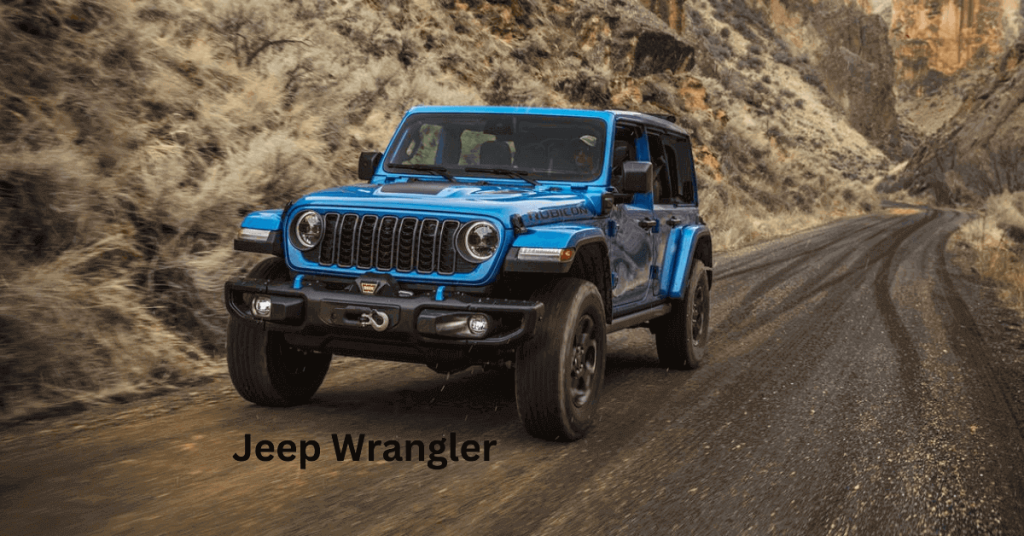
Many times most of the Jeep owners wonder why is my Jeep Wrangler leaking oil? Well, it is normal for engines to consume a certain amount of oil over time. The oil burns because it lubricates the moving parts of the engine.
However, if you notice that your Jeep Wrangler is leaking oil. Then you need to address the issues.
There are several possible causes for excessive oil consumption in an engine. For instance, common reasons for Jeep Wrangler leaking oil is a worn front oil pan gasket, damaged valve covers and rear main seals and many more.
Read further to know why is your Jeep Wrangler leaking oil? Also know how to fix them.
Is It Common Leaking Oil In Jeep Wranglers?
It’s become so usual for oil leaks in Jeep Wrangler. Like any vehicle, the Jeep Wrangler is subject to wear and tear, and the various components not only in the engine but also the drivetrain can develop leaks over time.
Some common areas for oil leaks in Jeep Wranglers for instance the oil pan, oil filter, and oil pressure sending unit. In addition, the gaskets and seals that are used to seal the various components in the engine. The drivetrain also can become damaged or worn over time, leading to oil leaks.
Further, that being said, it’s important to note that not all Jeep Wranglers will experience oil leaks. However, the frequency and severity of oil leaks can vary depending on a variety of factors. Such as the age of the vehicle, the mileage, and the driving conditions.
What are the symptoms of a Jeep Wrangler leaking oil?
It can be difficult to determine whether your Jeep has an oil leak. The first step in determining whether or not to fix the leak is to determine where the leak occurs.
Here are the symptoms of an oil leak in your Jeep Wrangler:
Oil under the car in Jeep
If you notice a pool of oil or spots under your Jeep Wrangler. Then, it is a good idea to check the levels of all the fluids in your vehicle to determine the source of the leak. Transmission fluid is typically red. And is used to lubricate and cool the components of the transmission.
However, if the power steering fluid level is low or the fluid appears frothy. Moreover, it could be an indication of a power steering leak. However, this is a symptom for your jeep wrangler leaking oil.
Oil spread all over the engine in Jeep Wrangler
There are several possible causes for this. For instance, a damaged oil pan, a faulty gasket or seal, or a problem with the oil pump. Driving with low oil levels can cause damage to your engine. Oil spread all over the engine is a symptom for your Jeep Wrangler Leaking oil.
Smoke from the engine in Jeep Wrangler
Transmission fluid is not typically flammable, but it can produce smoke if it is burned. However, this can happen if the transmission fluid is leaking onto a hot surface, such as the exhaust manifold or catalytic converter.
In this case, the transmission fluid will produce a distinctive burning smell and may also produce a large amount of thick, white smoke.
The dashboard oil light in Jeep
The oil light on your car’s dashboard is a warning indicator. However, there may not be enough oil pressure in the engine.
However, if the oil light comes on while you are driving. Moreover, you should stop the car as soon as it is safe to do so and turn off the engine. Check the oil level also add oil if necessary.
Engine overheating
Engine oil helps to lubricate the moving parts of the engine and dissipate heat. If the oil level is too low or if the oil is dirty or degraded, then it can cause the engine to overheat.
Moreover, it helps to lubricate the moving parts of the engine, reducing friction and wear. Even it also helps to keep the engine cool by dissipating heat. Further, if the engine is not properly lubricated, then it can suffer serious damage, such as seized pistons or a damaged crankcase.
It’s important to check in time the oil level in your car and to change the oil according to the manufacturer’s recommended schedule. In order to ensure that the engine is receiving the proper lubrication and protection it needs.
The smell of burning oil from Jeep Wrangler
The smell of burning oil or a sizzling sound coming from under the hood of your car could be a sign of an oil leak. However, it can happen because of a variety of issues such as worn or damaged seals and gaskets, a malfunctioning oil pump, or a crack in the engine block.
Why Does Your Jeep Wrangler Leak Oil?
There are several possible reasons for a Jeep Wrangler leaking oil.
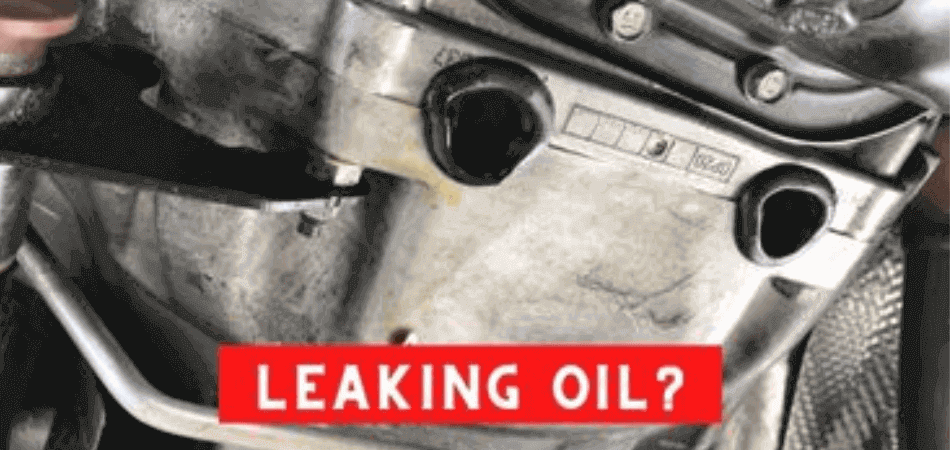
Below some common causes include:
- Worn or damaged seals and gaskets: Over time, the seals, and gaskets in the engine can become worn or damaged, leading to oil leaks. This could be the reason why my Jeep Wrangler is leaking oil.
- Oil pump malfunctioning: The oil pump is responsible for moving oil throughout the engine. If it is not functioning properly, then it can cause oil leak.
- Cracks in the engine block: If the engine block is cracked, then oil can leak out.
- Loose or missing oil drain plug: If the oil drain plug is loose or missing, for this also the oil can leak out.
- Damaged oil filter: An oil filter helps remove contaminants from the oil. If it is damaged or worn, then it can cause oil to leak.
How To Fix Oil Leak on A Jeep Wrangler?
There are a few steps you can take to try to fix the issue.
- First, check for any loose bolts and tighten them as necessary. However, make sure the bolts are not over-tightened, as this may cause further damage.
- Next, you can try using an oil-stop leak additive. After spotless, the area, apply the additive according to the manufacturer’s instructions and see if it helps to stop the oil leak.
- If the damage is not severe, then tightening the bolts or using an oil-stop leak additive. This may be enough to fix the issue. However, if the leak is coming from the valve cover region or the oil pan gasket, then you may need to replace the gasket.
- It’s also important that it’s always best to use ramps or jack stands. While working under your Jeep Wrangler, rather than just a floor jack. In order to ensure your safety.
Is It Cost-Effective To Fix Jeep Wrangler Oil Leak Problem?
Jeep Wrangler owners are all too familiar with oil leaks. These common issues can be caused by several factors like, ranging from simple wear and tear to more serious engine problems.
While most leaks can be easily fixed with a little knowledge and the right tools, some may require the help of a professional mechanic. So, what are the costs associated with repairing Jeep Wrangler oil leak issues?
It will depend on the severity and cause of the oil leak to determine the repair cost. For example, a small leak from a gasket or seal can usually be fixed without any hassle. However, the cost is around $450 where parts ($138-$151) and labour ($225-$283) expenses are included.
On the other hand, a more serious leak that requires replacing an engine part may cost around $1200 to fix.
Final Words
In contrast, Oil leaks for a variety of issues, including damaged gaskets, seals, or other engine components. However, if that left unchecked, then these leaks can lead to further damage to the engine and may even result in engine failure. Moreover, if you notice an oil leak in the Jeep Wrangler engine or other parts of the vehicle. Then it’s also important to address the issue as soon as possible.
It’s a good idea to have the vehicle inspected by a mechanic while you suspect an oil leak in a Jeep Wrangler. So that repairs can be made and the cause determined.
Read More Jeep Wrangler Ticking Noise While Driving -Causes
FAQs
Is it safe to operate a vehicle that has an oil leak?
You and other drivers on the road may be at risk while you drive a car that has an oil leak. Oil can catch fire when it reaches a particular temperature. Moreover, the engine of your car can also heat up to a point where a fire might start. But oil can also harm rubber hoses and seals, which might lead to a breakdown.
Can I repair an oil leak on my own?
Using a stop-leak additive or high-mileage oil blend is one of the simplest ways. In order to repair the leak on your own. In order to stop and prevent additional vehicle leaks, such as chemicals can soften and condition the rubber seals on your car. However, the leak may not be fully sealed for several hundred miles of driving.
How can I tell if the gasket around my oil filter is leaking?
While the engine oil lamp turning on, oil spilling from the filter, and lower-than-normal oil pressure are typical symptoms.
How long can a Jeep operate without oil?
Engines can run without oil, but the damage is so great. That they usually fail much more quickly than that and can only run for a maximum of 30 minutes.
What signs do you see when your car’s oil is low?
When the oil level in a car is low, below there are some signs to look for instance;
- At first, a warning light on the dashboard indicates low oil pressure
- A strong burning smell coming from the engine
- Sometimes, an unusual noises such as knocking or ticking sounds from the engine
- These reduced performance such as a decrease in power or acceleration
- Also, an increase in engine temperature or overheating.
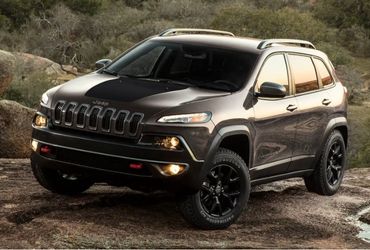
Many people rely on Jeeps for their daily transportation needs, despite their high cost. This popularity has made Jeeps, and particularly the Grand Cherokee model, highly sought after. However, it is not uncommon for a Jeep Grand Cherokee to experience difficulty starting, even if it has power. So, Why might this happen, Jeep Grand Cherokee won’t start but has power.
Jeep Grand Cherokee is a reliable Jeep model that is known for its durability. However, like all machines, it has many mechanical parts that can malfunction or fail, leading to issues such as starting problems.
When your Grand Cherokee has trouble starting, it can be frustrating, and it is important to carefully inspect the vehicle in order to determine the cause of the issue.
This article will provide information on common causes of starting problems in the Grand Cherokee and suggest possible solutions to fix the issue.
Let’s dig in.
What are Common Problems with the Jeep Cherokee?
It is inevitable that the Jeep Cherokee will have problems from time to time, just like any other vehicle. The frequency of some problems may vary, however.
Jeep Grand Cherokee Won’t Start But Has Power. How does the Jeep Cherokee perform when it comes to problems?
Engine stalling and transmission issues are some of the most common problems. It is true that some of these problems can result in large repair bills, but there are other, less expensive problems that can occur. Moreover, there have been reported that the power liftgate does not work or fails several times.
Yes, you read that correctly. Hackers can access your information through Uconnect because it hooks up with a cloud service.
How to Diagnose Jeep Grand Cherokee Starting Problems?
The easiest method of diagnosing starting problems is to use an OBDII scanner. In the Jeep Grand Cherokee, there is an OBD system that helps you pinpoint the cause and location of problems.
The first step to diagnosing Jeep Grand Cherokee problems is to connect the OBD2 scanner to the vehicle. Under the dashboard, you will find the tool connector. You should turn the ignition on after connecting it, but do not start the engine immediately.
After that, it will ask you for some information. Please answer all questions correctly and provide the Vehicle ID number as well. In the trouble code, you’ll find information about the source of the problem.
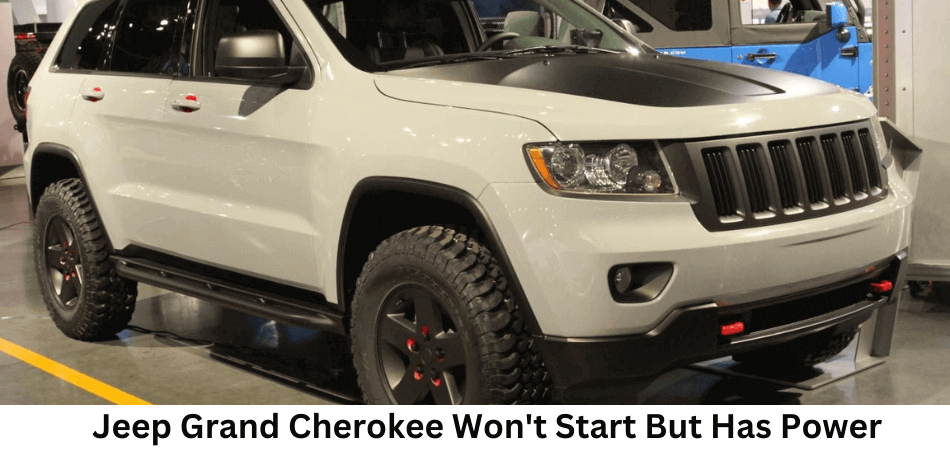
Why Does Jeep Grand Cherokee Won’t Start But Has Power?
Some times you may fall into situation that your Jeep Grand Cherokee Won’t Start But Has Power. The Jeep Cherokee is a versatile vehicle that is suitable for both street driving and off-road adventures. However, if it fails to start, it can be a frustrating and problematic experience.
Here, we’ve pinpointed some of the most standard reasons for difficulty starting the Jeep Cherokee. These include:
- Faulty Starter Motor
- Defective Battery
- Corrosion On Battery
- Weak Key Fob Battery
- Fuel Component Issue
- Bad Alternator
- Ignition Issues
- Engine Timing
- Rodent Damage
It is important to diagnose and address the specific cause to get the vehicle running again.
Jeep Grand Cherokee’s Starting Problem: How To Diagnose It?
One of the most effective ways to diagnose starting problems, as well as other issues, in the Jeep Grand Cherokee, is by using an OBDII scanner.
The Grand Cherokee is equipped with an OBD system that allows you to identify the location and cause of the problem. To use an OBDII scanner to diagnose a starting issue in the Grand Cherokee, follow these steps:
- Connect the OBDII scanner to the vehicle by locating the tool connector under the dashboard.
- Don’t start the engine after turning on the ignition.
- Follow the prompts on the OBDII scanner and provide the necessary information, including the Vehicle ID number.
- The scanner will generate a trouble code that will indicate the location and cause of the starting issue.
Learn more at here-
Jeep Cherokee Won’t Start: Causes & Solutions Explained!
Let’s explore our identified causes of why Jeep won’t start but has power.
1. Faulty Starter Motor
The starter motor is a crucial component in the starting process of your Jeep Grand Cherokee. It is responsible for turning over the engine and getting it running. On average, a starter motor will last between 100k and 150k miles.
But this lifespan can be shortened if the engine is frequently started. Over time, the starter motor may wear out and fail, causing issues with starting the engine.
Possible symptoms of a faulty starter motor
A bad starter motor often does not give much warning before it fails, so you may be stranded with a starting issue unexpectedly. One common symptom of a faulty starter motor is a clicking noise when the Jeep attempts to start.
If you experience starting problems that are likely caused by a bad starter motor, it is generally recommended to replace them. However, if you find yourself with this issue while on the road, you can try the following temporary fix.
Solutions
If your car is not starting due to a faulty starter motor, it is best to replace it with a new one. However, if you need to temporarily fix the issue, you can try the following procedure:
- Find a stick or metal tool.
- Tap the starter motor with the stick or tool.
- Attempt to start the car.
This method may be effective if any parts are stuck together or if there are any alignment issues. Keep in mind that this is only a temporary solution, and it is recommended to contact a mechanic for a more permanent fix.
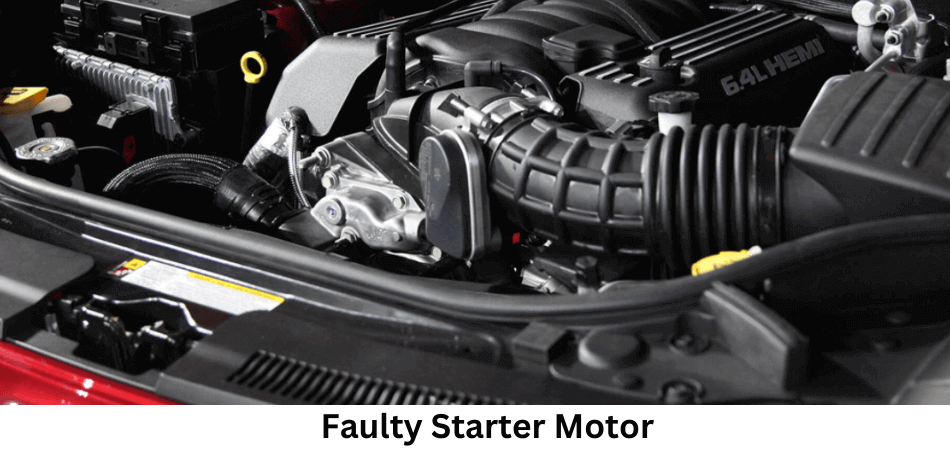
2. Defective Battery
A defective battery can cause starting problems in the Jeep Grand Cherokee. This may be due to a weak or dead battery. Or it may occur when a new battery has not yet reached its highest capacity.
Possible symptoms
Symptoms of a defective battery include slow or failed engine cranking. Using a multimeter, you can check the voltage between the battery poles to determine if the battery is the problem.
If the voltage is below 11.5 or above 14, the battery is likely experiencing problems.
Solution
To fix a defective battery, you can use jumper cables and a battery booster or borrow a battery from another vehicle. Using the red cable, connect the positive terminal of the dead battery to the black cable with the negative terminal of the donor battery.
You will then need to attach the black cable to the bare metal surface near the engine bay of the Jeep. Try to start the Jeep with a working battery. When finished, follow the reverse process to remove the cables.
3. Corrosion On Battery
If you have corrosion on the car battery contacts, it can result in a loss of contact and a reduced flow of current. Which can prevent your engine from starting properly. To determine if dirty battery contacts are causing starting problems in your Grand Cherokee, you can inspect the terminals for corrosion.
To do this, check for white or silvery-green deposits on the two battery terminal rubber covers. If you see these deposits but no other cracks or damage, you may be able to fix the issue by simply cleaning the battery, rather than replacing it.
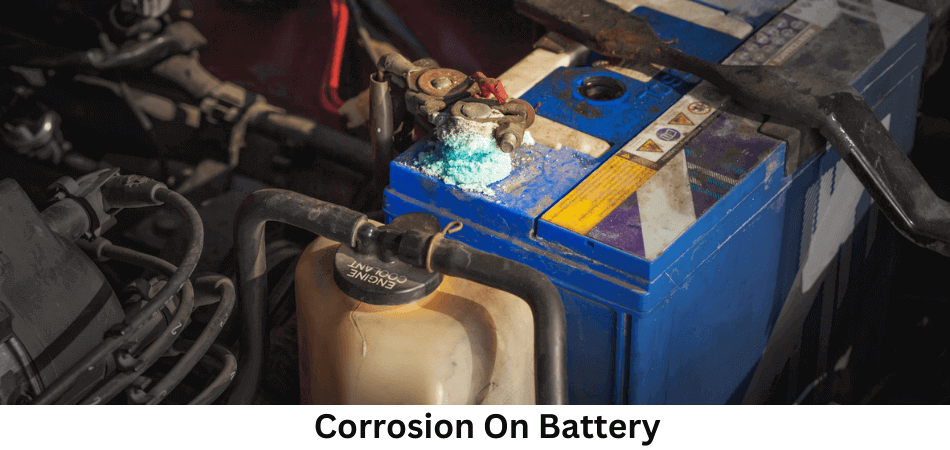
Solutions: How To Clean It?
To clean the battery on your Jeep Grand Cherokee, firstly, you will need to remove the pole cables. In doing this process it is important to pay attention to the order in which you remove the cables. Start with removing the black cable from the negative pole.
Use pliers to loosen the pole clamp, if you find it very tight. But be careful not to touch any other parts of the body with the metal pliers. & unplug the red positive pole cable.
After disconnecting the battery from the circuit, start cleaning the corroded areas. Once you have finished cleaning, reattach the terminals in the reverse order in which you removed them.
4. Weak Key Fob Battery
A weak battery in the key fob of your Grand Cherokee may prevent your vehicle from starting if it has a push start/stop button. However, you can still start your vehicle even if the key fob battery is weak or drained.
The key fob battery is used for sending signals to lock and unlock the doors and does not affect the starting process. A depleted key fob battery may prevent the doors from locking or unlocking with the push of a button and must be opened manually.
It is important to note that the immobilizer, which prevents the vehicle from starting without the correct key, is controlled by a passive transponder that does not require its own power source.
5. Fuel Component Issues
If your car is shut off while driving & won’t start, it may be due to insufficient fuel flow. When the combustion chamber does not receive enough fuel, the engine may not start properly.
It can happen because of a faulty fuel pump, a clogged fuel filter, or malfunctioning injectors. These problems can prevent the necessary amount of fuel from reaching the combustion chamber, leading to starting difficulties.
6. Faulty Fuel Pump
As a result of the fuel pump, the injection system receives the correct amount of fuel from the tank. A malfunctioning fuel pump can prevent the engine from starting.
Other symptoms of a faulty fuel pump may include engine jerking, decreased performance over time, and reduced engine power. It’s better to replace the fuel pump to resolve these issues.
It is advisable to bring your car to a service center for a diagnostic check to determine the cause of the starting problems and determine the most appropriate solution.
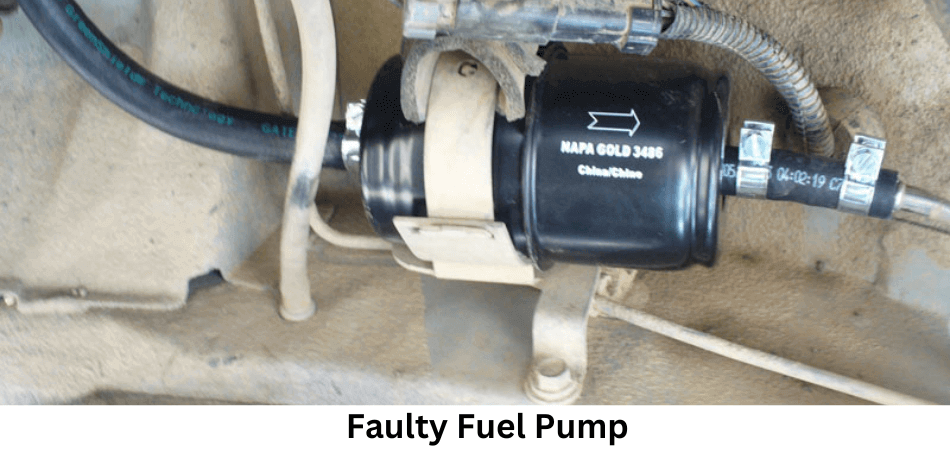
7. A Clogged Fuel Filter
The fuel filter in your Grand Cherokee does not typically wear out like mechanical parts, but it can become clogged over time by dirt and other particles in the air. As the filter becomes clogged, its permeability decreases, and fuel pressure is reduced.
While some level of clogging may not have a significant impact on performance, a very dirty fuel filter can cause the engine to run at reduced capacity or even prevent it from starting altogether.
In these cases, it is necessary to change the fuel filter rather than attempting to clean it.
8. Bad Alternator
The alternator is a device that generates electricity to power the electrical systems of your vehicle, including the battery. During a failure of the alternator, the battery will not be able to charge and cannot produce electricity.
This can cause the battery to drain, resulting in the engine not starting. While alternators are generally reliable and can last for a long time, they can break down depending on how you use them.
And in the case of a used car, the alternator may be old and nearing the end of its lifespan. If you suspect that a faulty alternator is causing your engine not to start, you will need to replace it with a new one.
9. Ignition Issues
If your Jeep is experiencing starting problems due to ignition issues, it may crank but won’t start. There can be a number of potential causes for ignition issues, including faulty coil packs, damaged spark plugs or spark plug wires, and problems with the computer system.
It is generally recommended to have a mechanic diagnose the specific cause of the ignition issues.
10. Engine Timing
While it is relatively rare, engine failure can also be a cause of starting problems in your Grand Cherokee. If the engine fails, the vehicle will not function at all.
In some cases, the driver of the vehicle may be responsible for causing engine damage, for example by tearing the timing belt, using the wrong fuel, failing to properly maintain oil levels, allowing the engine to overheat, or driving at excessively high speeds.
An experienced mechanic will be able to diagnose engine failure in a workshop and determine the cause of the problem.
11. Rodent Damage
Rodent damage can cause starting problems in your Jeep. Like your Jeep Grand Cherokee shut off while driving and won’t start. It can happen if the animals chew through cables and wires under the vehicle. This can disrupt various systems such as the fuel supply, oil supply, and power supply.
The damage caused by rodents is usually visible when you inspect the engine compartment. Repairs for this type of damage can be completed in a workshop, but they may be costly.
Why Does My Jeep Randomly Not Start?
It is possible to cause your Jeep Cherokee to stop starting for a variety of reasons, however when it happens very randomly and seems out of the blue, you could be doing a variety of things, such as:
- Leaving your Jeep unattended for a long period of time.
- Too much cold exposure can damage your battery.
- Not refueling when your gas runs low.
Despite their frustration, these issues can be easily resolved. The battery will keep a good charge if you start your Jeep once every three to four days if it’s going to sit a while without being used. This will prevent wear and damage to the battery and other parts.
If While your Jeep is not running, keep it out of the extreme cold, this will prolong your battery’s life and reduce your chances of battery issues. Additionally, if you need to get somewhere in an emergency, you need to have enough fuel in your tank.
If you need to fuel up before rushing to get help or helping someone else, it may cause your car to not start the first few times you try.
How Do You Tell if Your Starter is Bad or Battery?
If You may have a faulty starter, or you may have a drained battery if your Jeep Cherokee won’t start. When your battery is fully charged, you can connect a battery charger to your battery and see if the engine starts after the battery gets enough power. Additionally, before doing the jump-start, make sure the battery terminals are not corroded!
In spite of the fact that jump-starting your car can get you on your way quickly, it doesn’t fix the underlying problem of why your Jeep Cherokee won’t start. If your battery keeps dropping without any apparent reason, then it may be a faulty alternator!
How To Start Your Jeep Grand Cherokee With Weak Key Fob Battery?
If your Grand Cherokee model lacks a physical keyhole for inserting a key, instead of relying on a key fob with a start/stop button, pressing the button may be enough to start the vehicle.
This is because the key fob emits a signal that is recognized by the vehicle’s immobilizer system, allowing the engine to start. Make sure to keep the key fob close to the start/stop button while attempting to start the vehicle.
Final Thought
Now you might understand that why Jeep Grand Cherokee Won’t Start But Has Power. There can be many different reasons why a Jeep Grand Cherokee may experience starting problems. Such as, Jeep won’t start but has power or cut off while driving. Using the above guide, you’ll be able to identify potential causes and determine the appropriate course of action to take.
In cases where you are uncertain of the cause or feel uncomfortable attempting repairs on your own, you should consult a mechanic or dealership.
FAQs
Why won’t my Jeep crank over when I flip the key?
This might be because the ignition switch isn’t receiving power, a fuse has blown somewhere, the ignition switch is broken, the under-hood starter relay is broken, the transmission neutral safety switch is broken, or there’s an issue with the wiring or connectors that make up this ignition circuit.
Why won’t my Jeep start even if the battery is new?
The cabling from the battery to the starter must first be examined. The voltage drop across the starting circuit is what they should be observing. The starter and neutral safety switches should also be checked. The weak key fob could be the second problem.
Can a battery fuse prevent a Jeep from starting?
Your automobile won’t start if it is broken or if the fusible linkages are damaged. The starting relay, which is required to supply the spark, the ignition, and the power to drive your car, might be cut off by a faulty or blown fuse.
How do I activate my ignition switch without turning the key?
The vehicle’s accessory/battery mode is activated by pressing the start button once without depressing or pulling the brake. For automobiles using a conventional key system instead of a smart key system: To engage the vehicle’s accessory mode, turn the ignition key to the first position.
Can you start a Jeep Cherokee engine manually?
Push-starting often referred to as bump-starting, is an antiquated yet reliable method to start an automobile with a defective starter. It only functions, though, if your car has a manual transmission. How to do it is as follows: Keep the engi
ne running while shifting into first or second gear on your car’s manual transmission.
Learn about resetting the oil change light on your Jeep check it out Jeep Wrangler Oil Change Reset
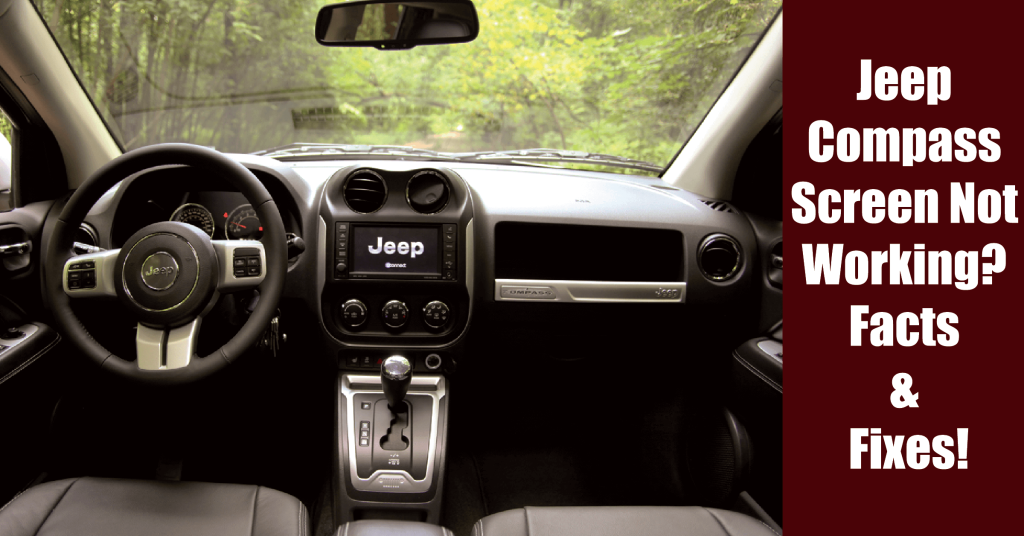
The Jeep Compass is a popular compact SUV known for its spacious interior and hauling capabilities. However, it has faced some challenges and problems that have caused concern among its owners. As a result, it might happen that your Jeep Compass screen not working!
In some cases, the touch screen may become unresponsive, frozen, or display error messages. The main causes of this problem could be wiring problems, physical damage, software errors, etc. These issues can be frustrating and may prevent using certain features or functions of the vehicle, such as navigation, audio, or climate control.
In addition, research shows that the Jeep Compass experiences a significant depreciation rate of 47% after 5 years of production.
However, it’s time to find out what’s going on, & how we can fix it. & find out what Jeep Compass has to offer!
Does The Jeep Compass Have A Lot Of Problems? How To Diagnose It?
Like any car, the Jeep Compass may have issues or problems that can arise over time. However, it’s important to note that not all Jeep Compass vehicles will experience the same issues. Also, the frequency and severity of problems can vary widely.
Moreover, if you are experiencing problems with your Jeep Compass, the first step in diagnosing the issue is to try to identify the symptoms. This could include issues with the touchscreen, engine performance, transmission, electrical system, or any other aspect of the vehicle.
Once you have identified the symptoms, you can try troubleshooting the issue by checking for error messages.
Moreover, you should also look for warning lights on the dashboard and review the owner’s manual for any diagnostic information or troubleshooting steps. If the problem persists, you may need to take your vehicle to a mechanic for further diagnosis and repair.
It’s worth noting that proper maintenance and care can help prevent many potential issues with your Jeep Compass. Keeping up with regular service intervals and using high-quality replacement parts can help extend the life and reliability of your vehicle.
Jeep Compass’s Screen Going Crazy & Won’t Turn On! Reasons!
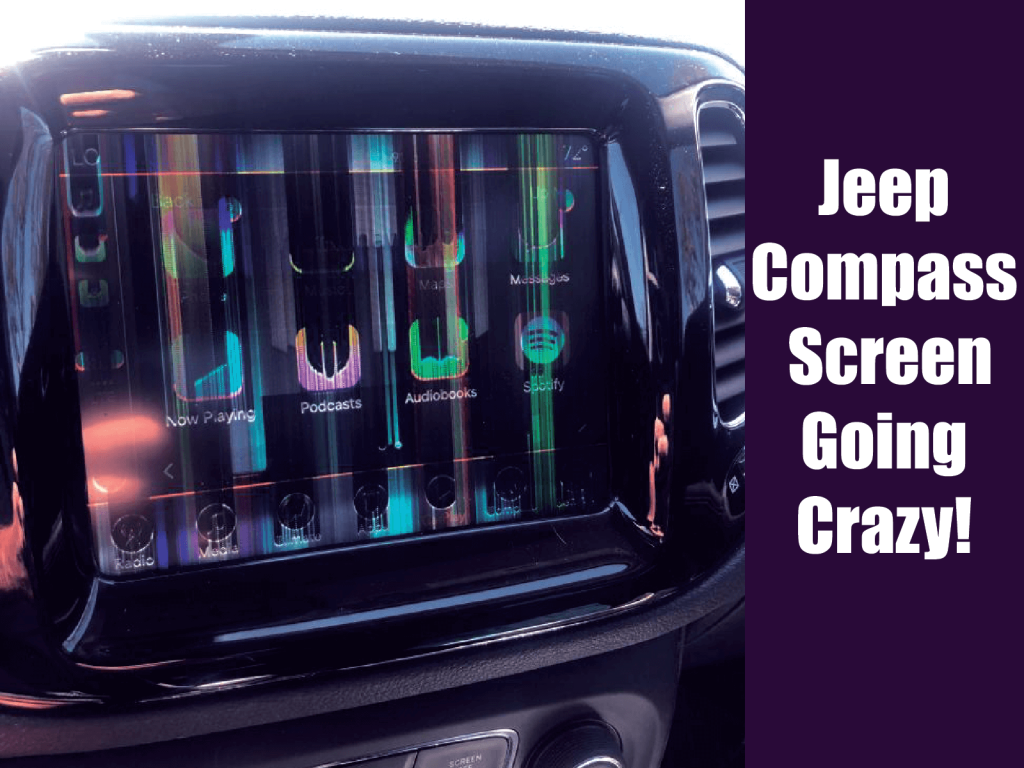
The Jeep Compass touchscreen can sometimes experience a variety of problems, including:
Unresponsiveness
Some users have reported that the touch screen does not respond correctly to their inputs, which can be frustrating. This issue can be caused by a variety of factors, such as a loss of calibration or dirt or debris accumulating on the screen.
Wiring problems
If there is a problem with the internal wiring of the touch screen, it may not function properly or turn on at all. It happens because of a defective installation or because wires become loose due to vibration.
Physical damage
Touch screens are delicate and can be prone to breaking because of rough treatment or physical impact. This can include cracks or scratches caused by rough handling, bumps, or accidents as well.
Software errors
The touch screen relies on software to function properly. And software can sometimes have faults or problems that can cause the screen to malfunction.
These are some of the main problems that can affect the Jeep Compass touchscreen. If you are experiencing issues with your touch screen, it may be helpful to try to identify the symptoms and possible causes to find a solution.
Jeep Compass Screen Not Working! How To Reset Jeep Compass Touchscreen?
Let’s know how to reset the Jeep Compass Touch Screen.
Also, if this happens to you, there are a few steps you can try to reset the touch screen and see if that fixes the issue.
Remove and reinsert a USB drive
If you are using a USB drive to store music files and the touch screen is not functioning properly; it can happen because the drive is overloaded with data.
To fix this issue, remove the drive, delete some files, and reinsert it into the USB port. Restarting the car may also help resolve the issue.
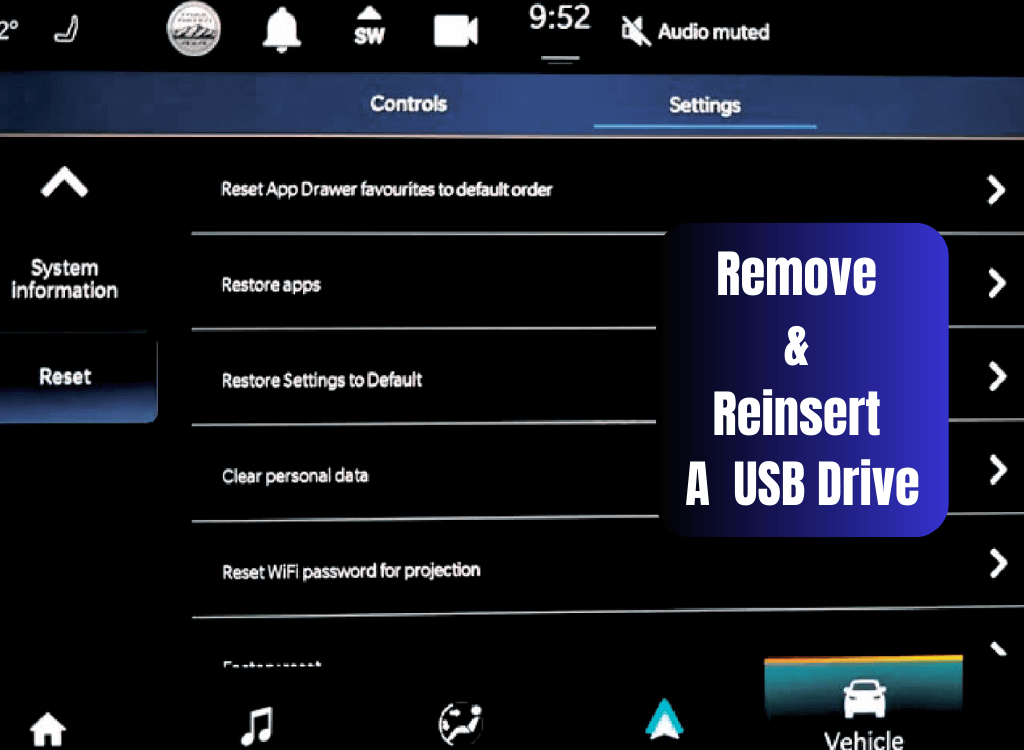
Use your smartphone to reset the screen
If you can’t access the touch screen to reset it, you can use your Android or iOS device to make a call while the car is running. This will wake up the screen for a short time, allowing you to navigate to the settings and reset the screen.
To do this, tap on the vehicle settings icon at the bottom of the screen. Then select the reset option and follow the prompts to restore settings to default and clear personal data.
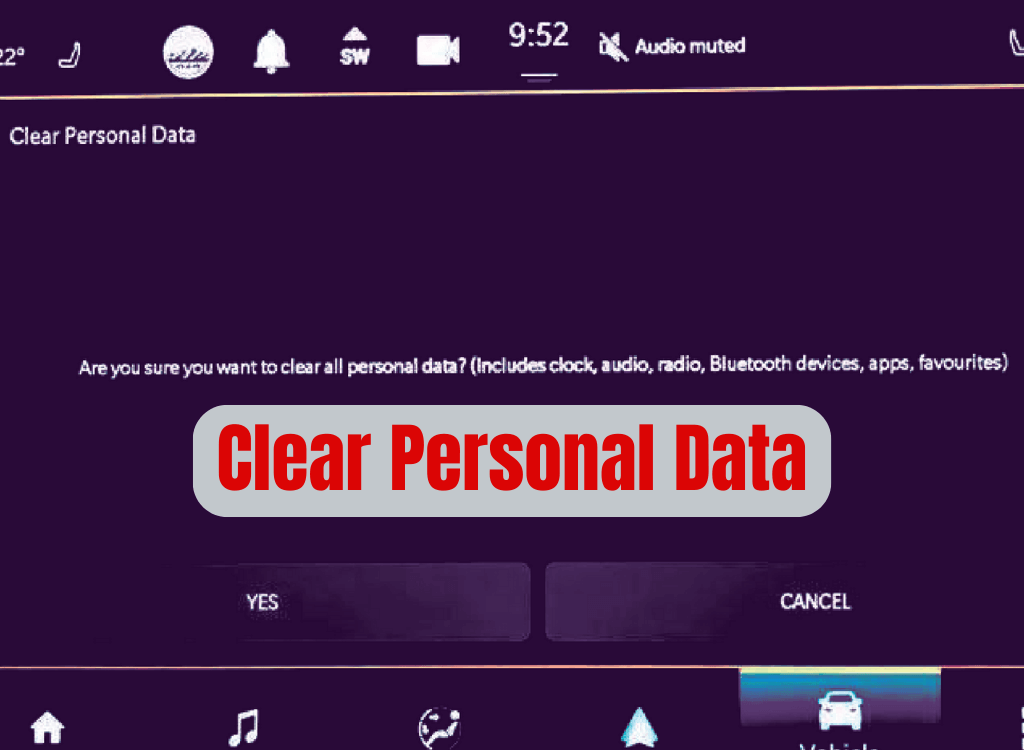
Use the factory reset option
If the previous methods do not fix the issue, you may need to try the factory reset option as a final resort. This option will restore the touch screen to its original settings and may help resolve any issues with the software.
However, it’s important to note that this option will also erase all personal data from the touch screen, so you should only use it as a last resort.
Further, if the touch screen still isn’t working properly after a reset, you may need to try some other troubleshooting steps. One option is to check if any updates are available for the touch screen’s software. You can also try disconnecting the battery for a few minutes and then reconnecting it to see if that fixes the issue.
Jeep Compass Touch Screen Black: Service Shifter Issues!
Some Jeep Compass owners have reported an issue where the touch screen becomes black and display a message saying “service shifter.” This issue can occur when the vehicle is in the park, and it may prevent the driver from being able to use the touch screen or shift the vehicle out of the park.
If you are experiencing this issue with your Jeep Compass, there are a few steps you can try to resolve it:
- Check the owner’s manual or consult a Jeep dealership to see if there are any specific troubleshooting steps you can try.
- Try restarting the vehicle to see if that clears the issue.
- Check the battery and make sure it is fully charged and connected properly.
- Check the transmission to see if there are any issues that could be causing the problem.
If none of these steps resolve the issue and the screen remains black with the “service shifter” message, it may be a more severe problem. It’s important to address this issue as soon as possible, as it could affect the vehicle’s safety and performance.
Watch here to learn how to fix this issue:
Why Is My Jeep Compass Screen Frozen? Reasons & How To Fix It?!
The Uconnect system is an infotainment system that is available in some Jeep Compass models. It provides the driver with a range of features including navigation, communication, and entertainment. If the Uconnect system in your Jeep Compass has gone frozen, it means that it is not functioning properly and may not be responding to input from the user.
There are several possible reasons why the Uconnect system in your Jeep Compass may have gone frozen. Some common causes include:
- A software glitch: Sometimes, the Uconnect system may freeze due to a software issue or bug.
- Overheating: If the Uconnect system is being used heavily. Or if the vehicle has been sitting in the sun for an extended period of time, it may overheat and cause the system to freeze.
- Hardware failure: In some cases, the Uconnect system may freeze due to a hardware failure or malfunction. This could be caused by a faulty component, such as a damaged screen or a failing motherboard.
To fix a frozen Uconnect system in your Jeep Compass, you can try the following steps:
- Restart the system: Sometimes, simply restarting the Uconnect system can resolve the issue. To do this, turn off the system and then turn it back on again.
- Update the software: If the Uconnect system is not up-to-date. & it may be experiencing software issues that can cause it to freeze. To update the software, you can visit the Jeep website and download the latest version of the Uconnect software.
- Check for overheating: If the Uconnect system is overheating, allowing it to cool down may resolve the issue. You can do this by turning off the system and allowing it to sit for a while, or by using a fan to cool down the system.
- Contact a Jeep dealership: If none of the above steps resolve the issue, it is possible that there is a hardware failure or malfunction. In this case, you should contact a Jeep dealership or a trusted mechanic to diagnose and fix the problem.
How To Soft Reset Uconnect System?
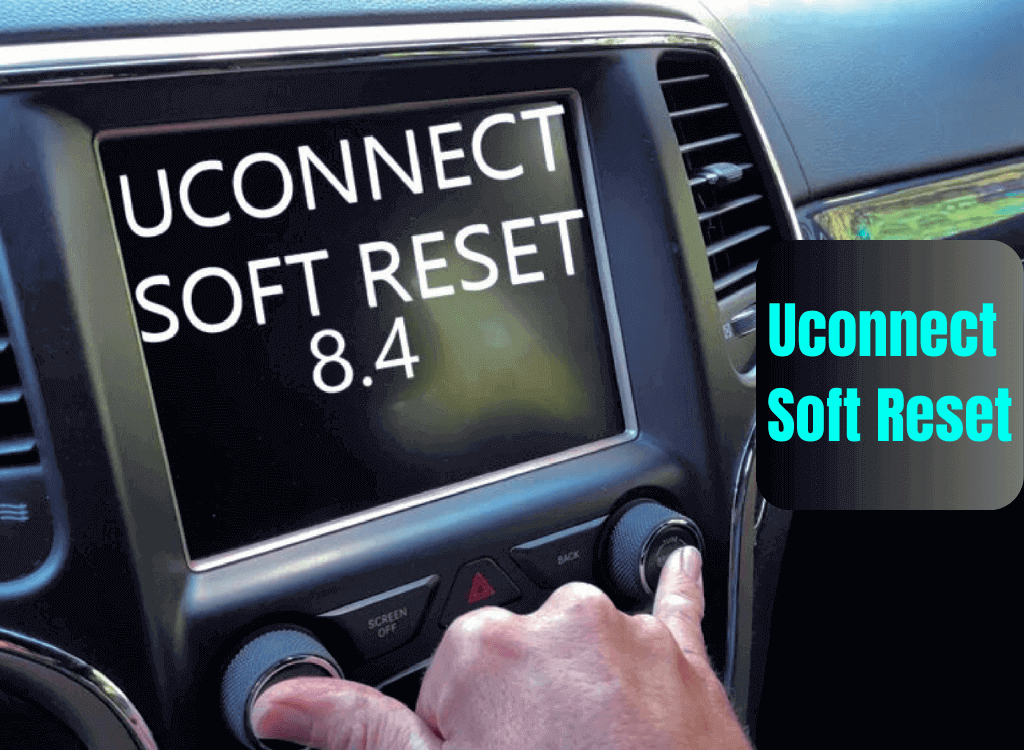
If you’re facing any software glitches with your Uconnect System’s touchscreen, don’t worry! We’ve got you covered with a simple solution. Just follow these effortless steps and perform a soft reset to fix the issue:
- Start your Jeep’s ignition by turning the key.
- Press and hold the volume and knob buttons to begin the vehicle.
- Hold the knob buttons for 20 seconds and notice the screen flash on your Jeep.
- Your system will re-initialize and connect to the main screen of your Jeep.
By adhering to these procedures, you can easily tackle any software-related difficulties!
How To Hard Reset Uconnect System?
Performing a hard reset on your Uconnect system is a great way to resolve any issues you may be experiencing. However, it’s essential to understand that this process will erase any saved data.
But don’t worry; the reset process is straightforward and can be completed during installation. To reset the touchscreen on your Jeep Compass, follow these easy steps:
- Disconnect the negative terminal of your vehicle’s battery.
- Allow 5 minutes to pass.
- Reconnect the previously removed terminal.
- Your Uconnect system is now reset and ready to use.
Watch Here To Learn More:
Jeep Compass Bluetooth Not Working! Causes & Solutions!
If the Bluetooth in your Jeep Compass is not working, it could be due to a variety of reasons. Some common causes of Bluetooth problems in vehicles include:
Failed pairing
If the Bluetooth connection between your phone and the Jeep Compass is not working, it may be because the devices have not been paired.
To fix this issue, you can try deleting the connection from both devices and re-pairing them.
Outdated software
If the software on either your phone or the Jeep Compass is out of date. It causes problems with the Bluetooth connection.
To fix this issue, you should ensure that both devices have the latest software updates installed.
Hardware failure
In some cases, a hardware failure or malfunction may cause Bluetooth problems in the Jeep Compass. This could be due to a faulty component, such as a damaged Bluetooth module or antenna.
To fix this issue, go to a professional mechanic and seek repair to address the problem.
Interference
Sometimes, other electronic devices or appliances may interfere with the Bluetooth connection.
If you are experiencing Bluetooth issues, you should try moving any other electronic devices away from the Jeep Compass. & see if this resolves the problem.
Jeep Compass Fault Code: How to Diagnose?
When diagnosing any issues with your Jeep Compass, having the right tools is essential. Connecting your vehicle to a diagnostic tool via the onboard diagnostics (OBD) port under the dashboard lets you easily input crucial details about your specific make and model.
From engine and vehicle ID numbers to brand and model information, accuracy is critical to pinpointing the root cause of any problems. With the ignition on and engine off, you can confidently rely on the diagnostic tool to provide the information you need to keep your Jeep Compass running smoothly.
Jeep Compass Lightening Bolt Light: Warning!
The Jeep Compass is equipped with a variety of warning lights to help the driver understand the status of the vehicle and identify any potential issues. One warning light that may appear on the dashboard of a Jeep Compass is the lightning bolt symbol.
If the lightning bolt warning light appears on the dashboard of your Jeep Compass, it means that there is an issue with the vehicle’s engine or emission control system. This light may appear along with other warning lights or messages. Such as a red lightning bolt on the screen that indicates a more serious issue.
When the lightning bolt warning light appears on the dashboard of your Jeep Compass, pay attention to it and take steps to address the issue as soon as possible.
If the lightning bolt warning light is accompanied by other warning lights or messages. Or if the screen is not turning on, it’s important to stop driving the vehicle immediately and seek assistance.
Continuing to drive the vehicle with a serious issue could lead to further damage and dangerous situations.
Proper Maintenance Guide For Your Jeep Compass Touch Screen!
Is the Jeep Compass screen not working? To properly maintain the touch screen in your Jeep Compass and prevent problems from occurring, you can follow these tips:
Keep the screen clean
To keep the touch screen in your Jeep Compass functioning properly, it is important to keep it clean. Use a soft, dry cloth to gently wipe away any dirt, dust, or fingerprints from the screen. Avoid using harsh chemicals or abrasive cleaners, as these may damage the screen.
Protect the screen from damage
To prevent damage to the touch screen in your Jeep Compass, avoid pressing down on the screen too hard. As this can cause the screen to crack or become unresponsive. You should also try to keep sharp objects away from the screen, as these can cause scratches or other damage.
Keep the software up to date
To ensure that the touch screen in your Jeep Compass is functioning properly. It is important to keep the Uconnect system’s software up to date. You can visit the Jeep website to download the latest version of the Uconnect software and install it on your vehicle.
Avoid overheating
If the touch screen in your Jeep Compass or the vehicle has been sitting in the sun for a long time, causes overheating & becomes unresponsive. To prevent this issue, you can try to avoid using the touch screen for extended periods of time or use a fan to cool down the system.
Use a screen protector
To protect the touch screen in your Jeep Compass from scratches & other damage, consider using a screen protector. These are thin films that are applied to the screen to provide an extra layer of protection.
By following these tips, you can help to maintain the touch screen in your Jeep Compass and ensure that it is functioning properly.
However, if you are experiencing any issues with the touch screen that you cannot resolve, consider seeking the advice of a mechanic for further help.
Final Thoughts
Finally, the features of Jeep Compass come up with a fantastic infotainment system that is easy to use. When compared to previous versions of Uconnect, the latest generation of the design adds plenty of improvements to the user experience.
The touch screen of the Jeep Compass, however, is quick and responsive to touch gestures interestingly. It’s reasonable, though, that you might have issues with the touch screen & some other common problems.
Hopefully, after reading this article, you now have the information to figure out why is your Jeep Compass screen not working and how to fix it.
FAQs
How can you reset the radio on a 2016 Jeep Compass?
The volume and tuner knobs are located on the front of your stereo system. For roughly 10 to 20 seconds, press and hold both knobs. The stereo will turn off before restarting. As soon as the screen turns black, you can release the knobs.
How can I reset the media on my Jeep Compass?
At least 10 seconds should be spent simultaneously pressing and holding down the volume and tuner buttons. The Jeep logo will appear on the screen before turning off. The display will turn back on. Resetting the stereo will be done.
How do you operate the Jeep Compass’s screen?
To turn off the Uconnect screen, press the SCREEN OFF button on the faceplate. Activate the screen, press the button once more, or tap it. And leave a menu or specific item on the Uconnect system, and press the Back Arrow button.
What’s wrong with my infotainment system?
Blowing a car fuse, having wiring problems, having blown valves, or not having enough power to operate the system are a few of the frequent causes of the entertainment system not turning on due to the power source failing. Turn off the vehicle’s power supply to start troubleshooting the power issue.
Is maintaining a Jeep Compass expensive?
The projected 5-year maintenance cost for a Jeep Compass is Rs 51,401. First and second maintenance visits are complimentary after 15000 and 30000 miles, respectively.
To learn more about trouble opening your jeep patriot hood you can check out How To Open Jeep Patriot Hood?













About